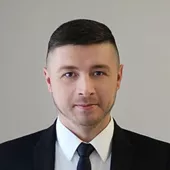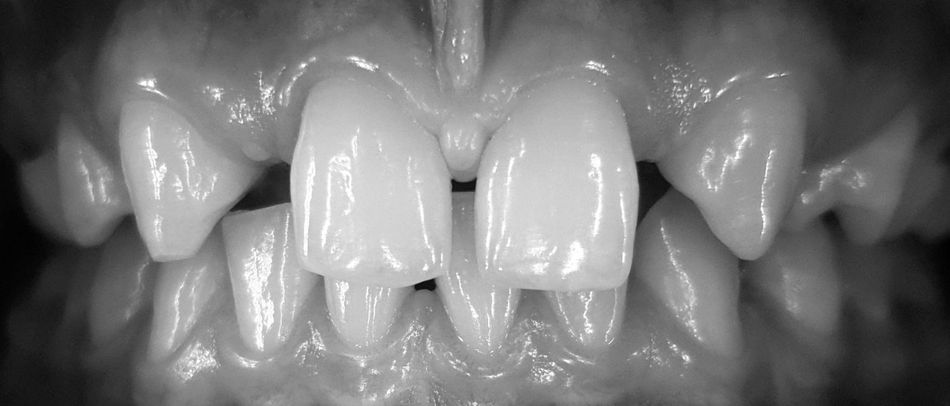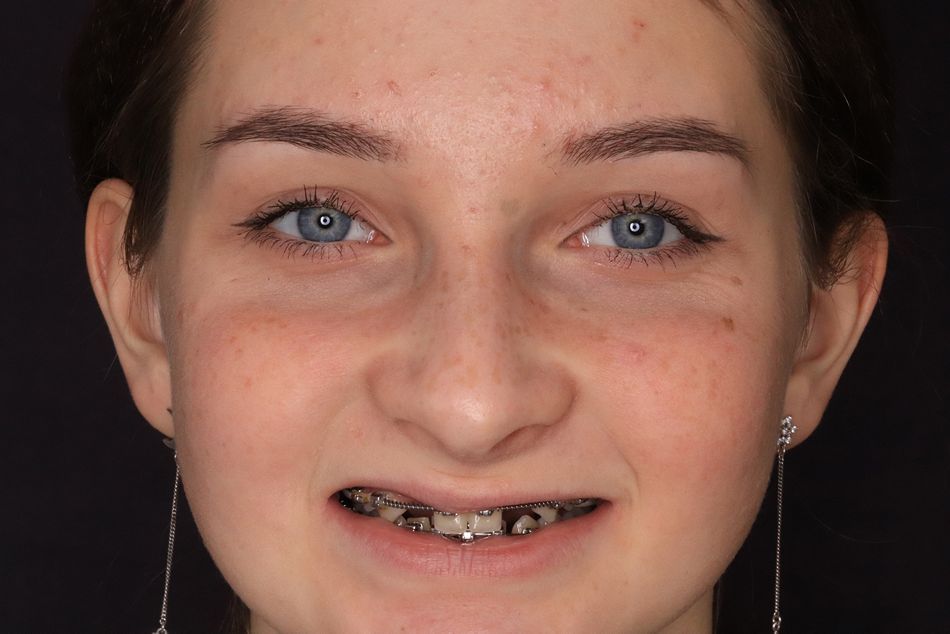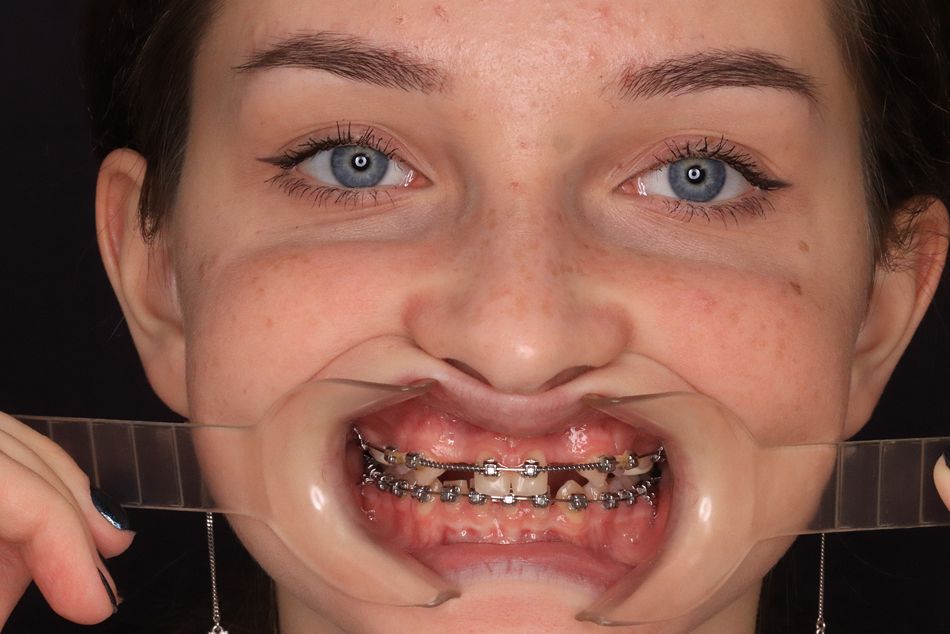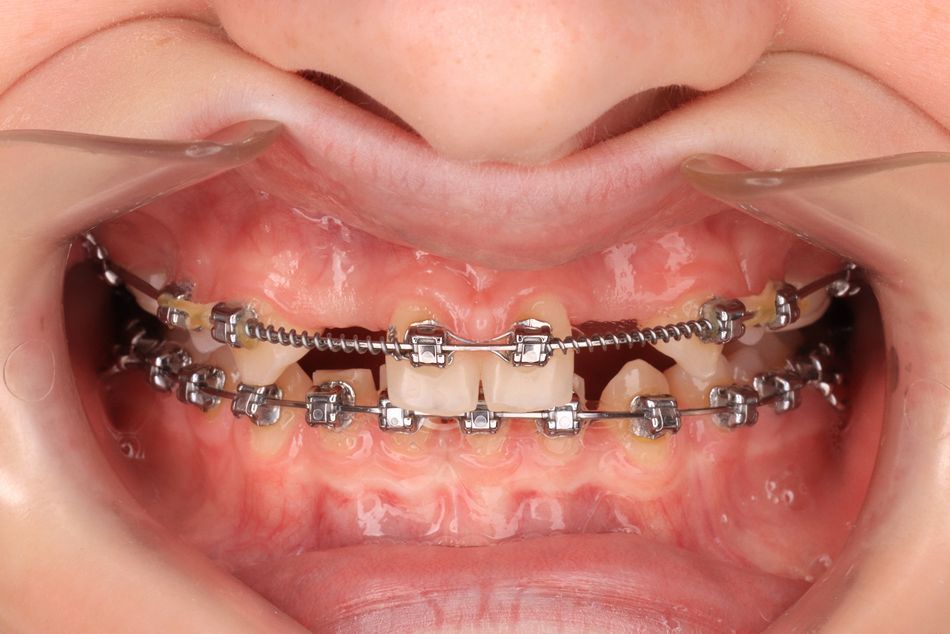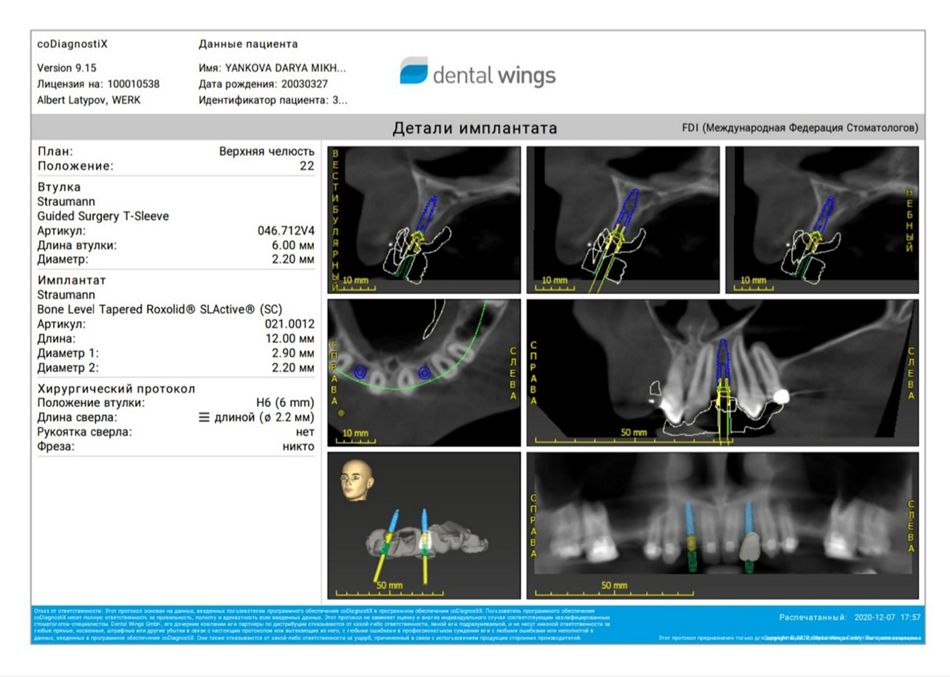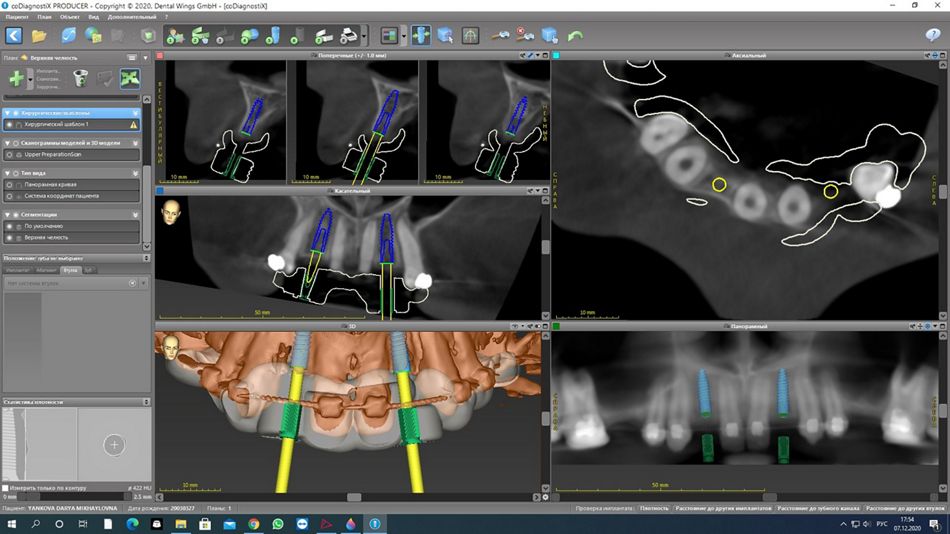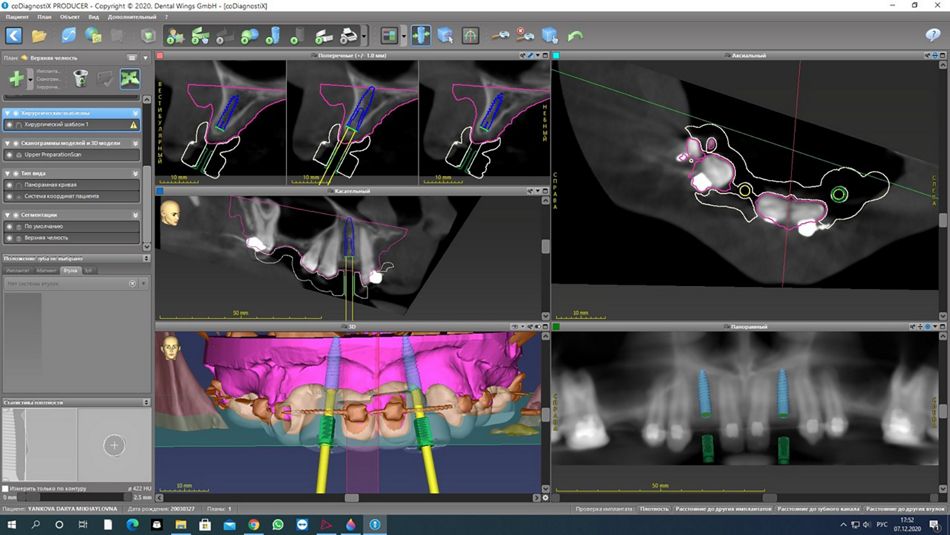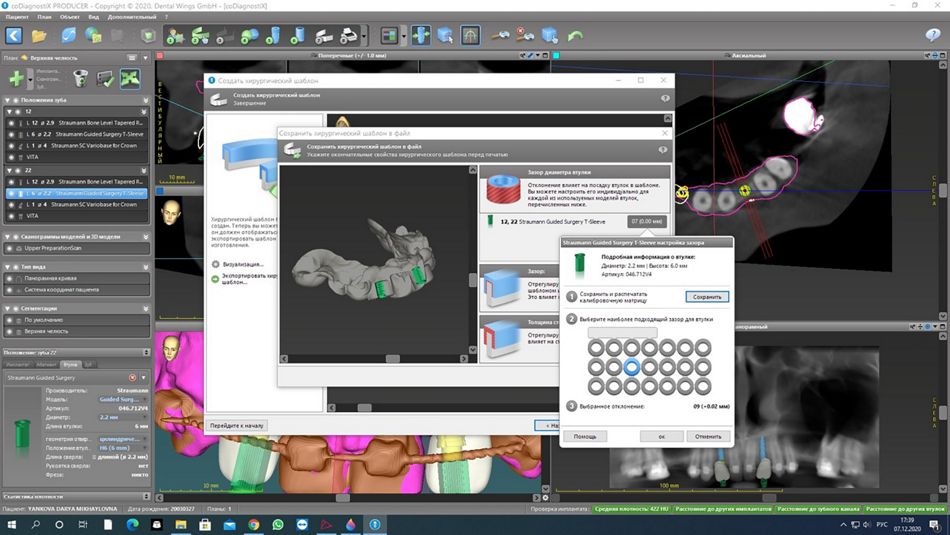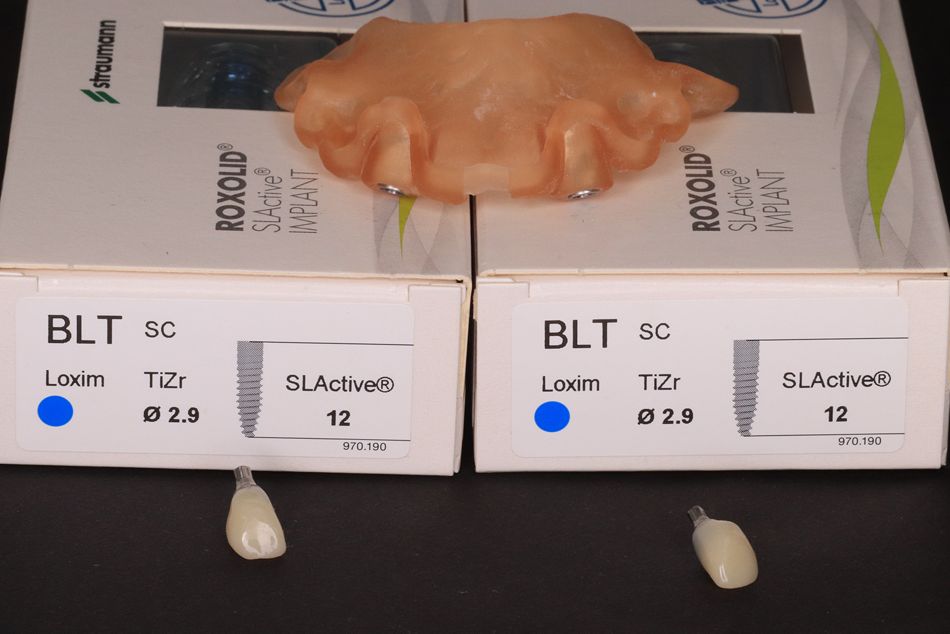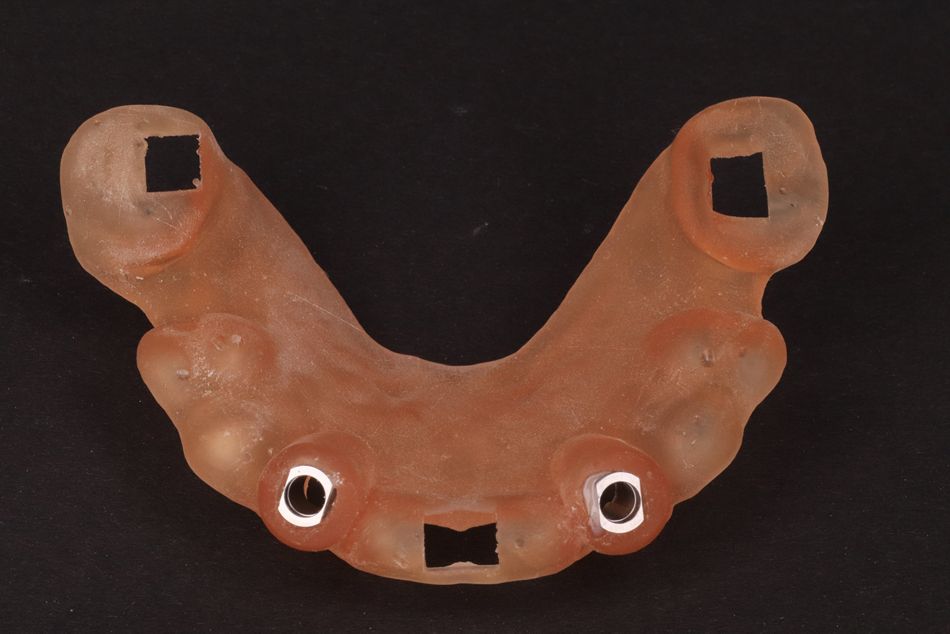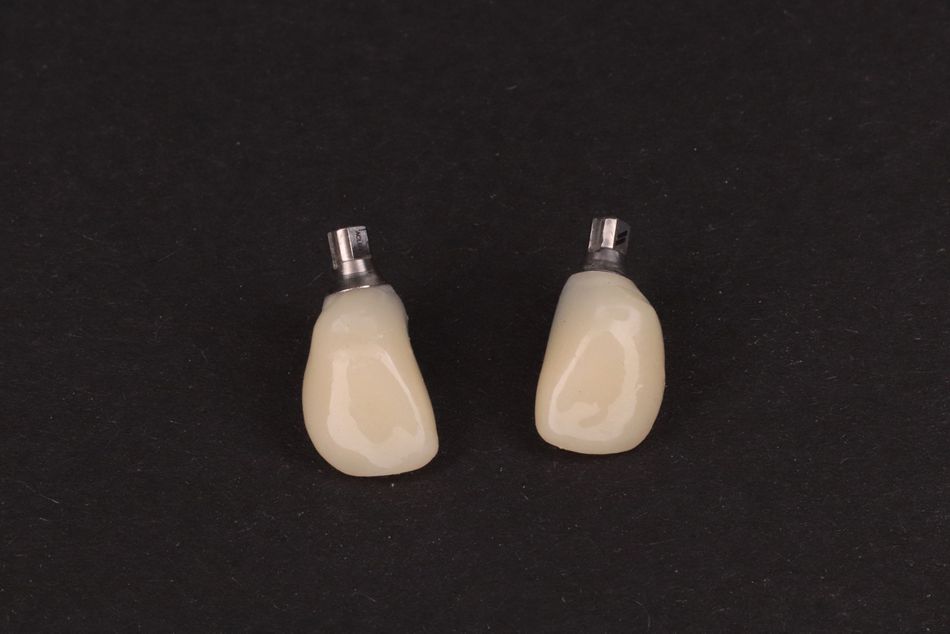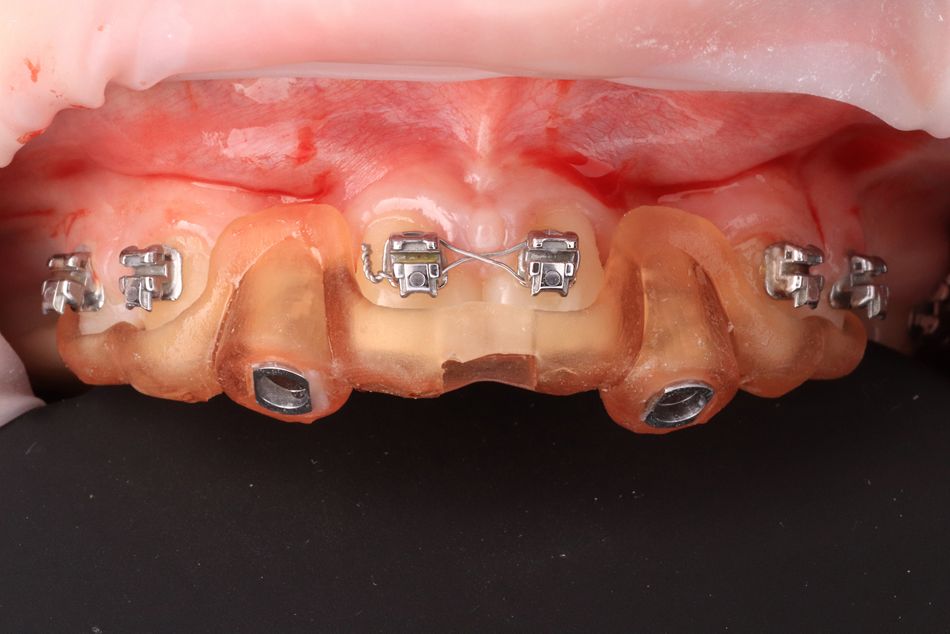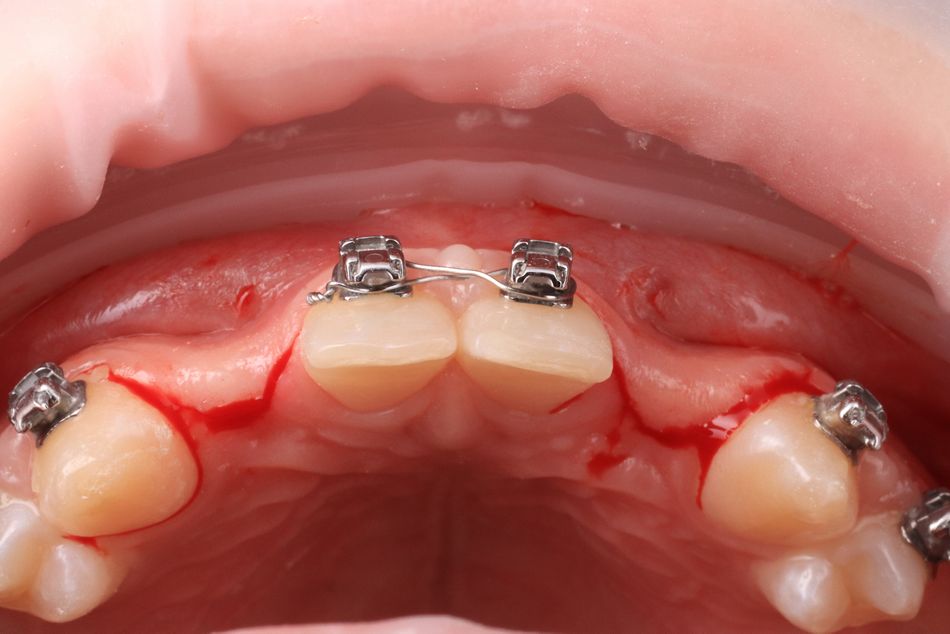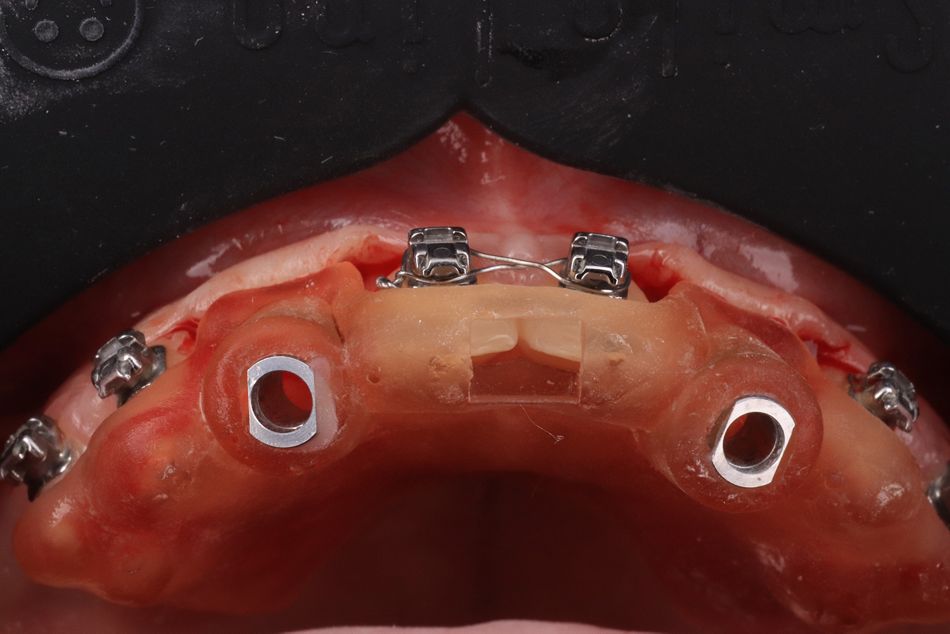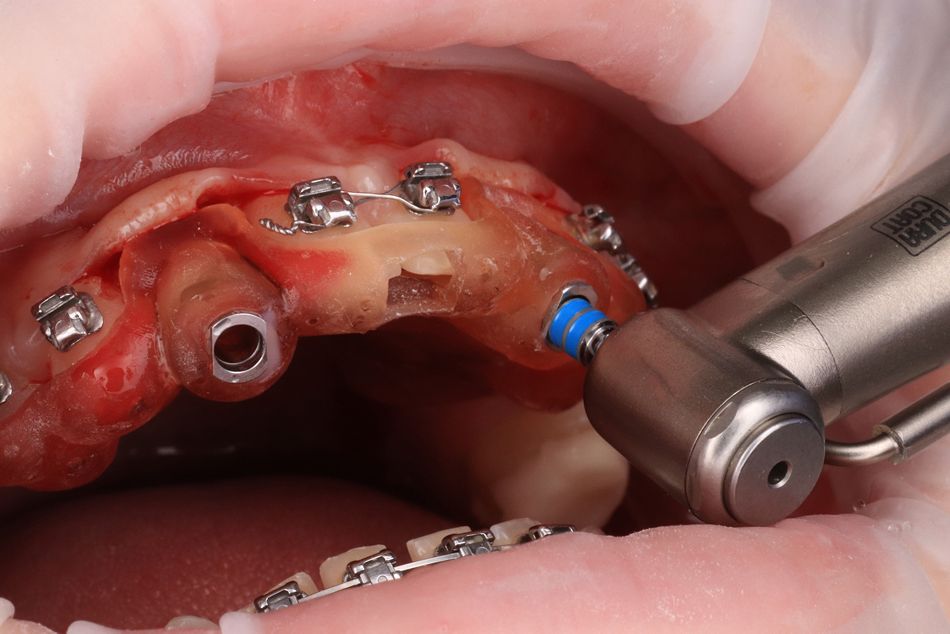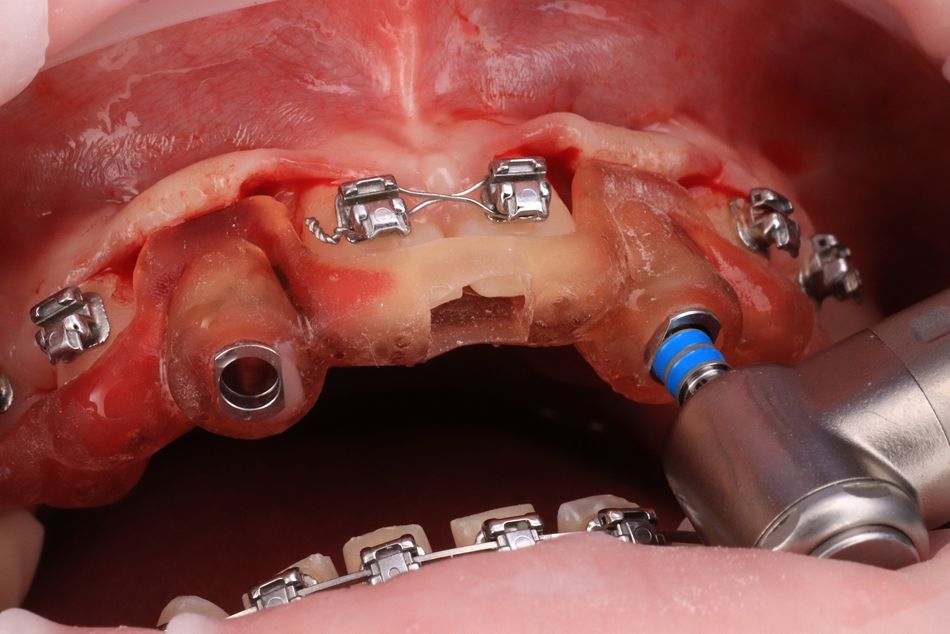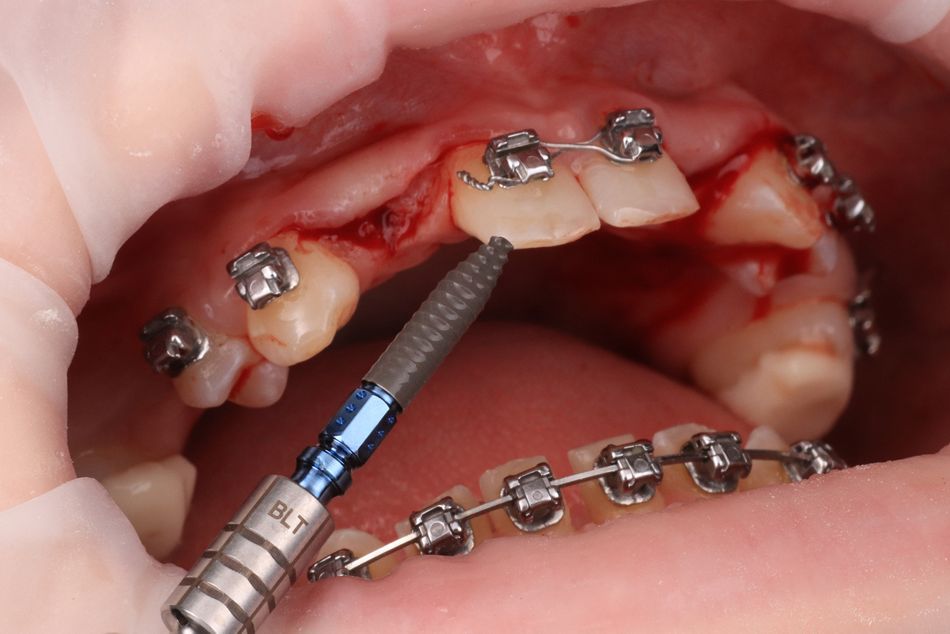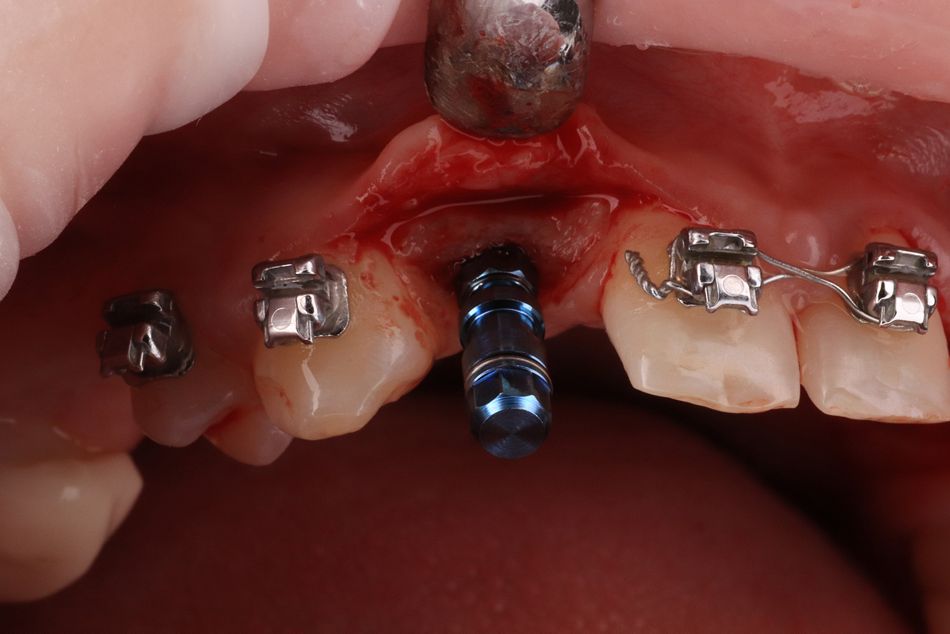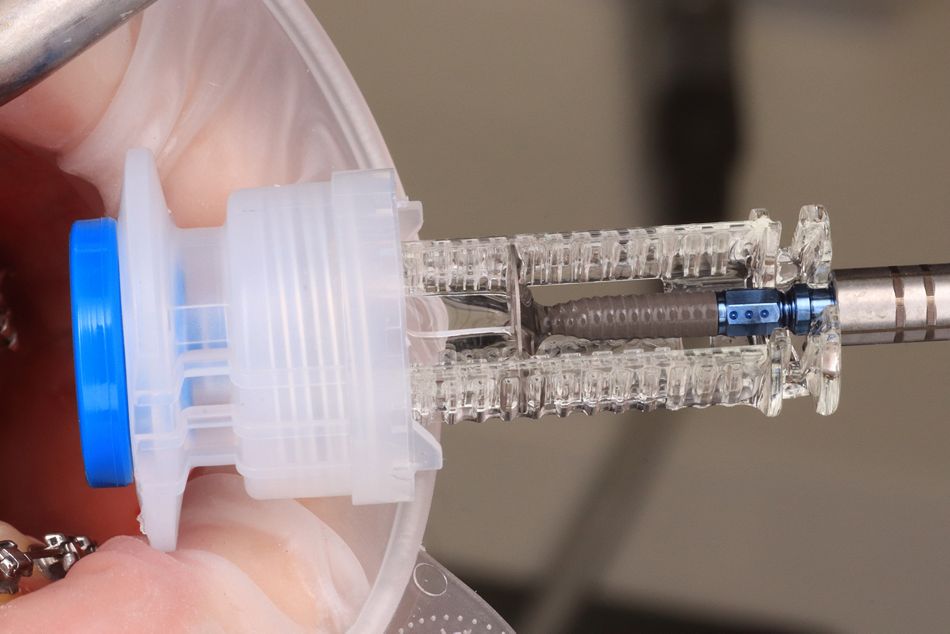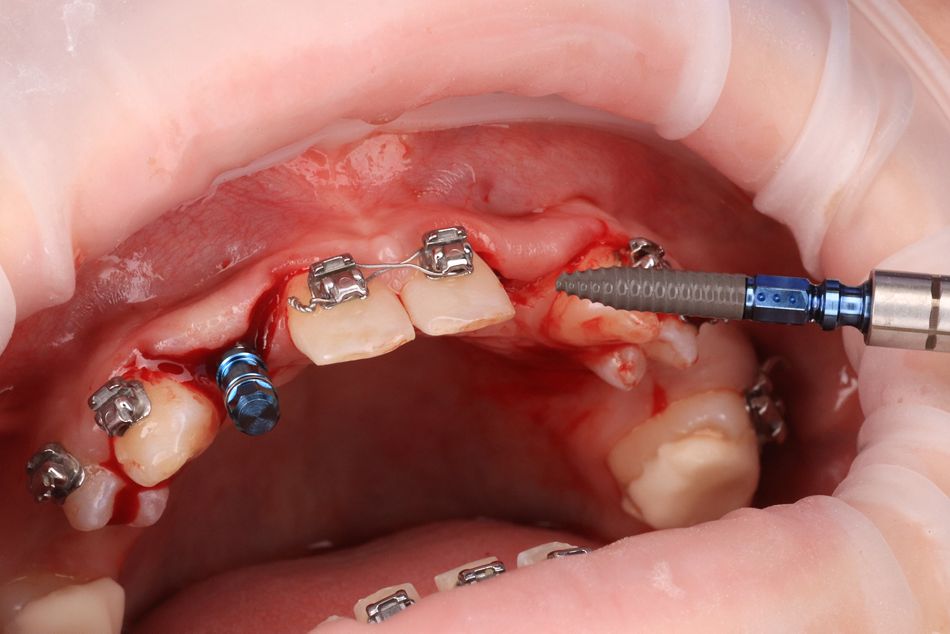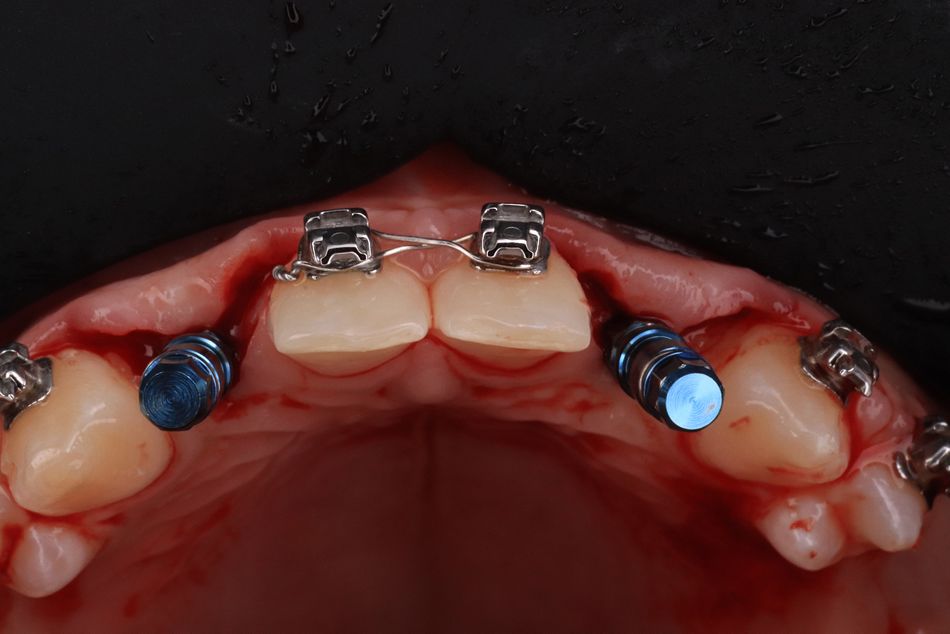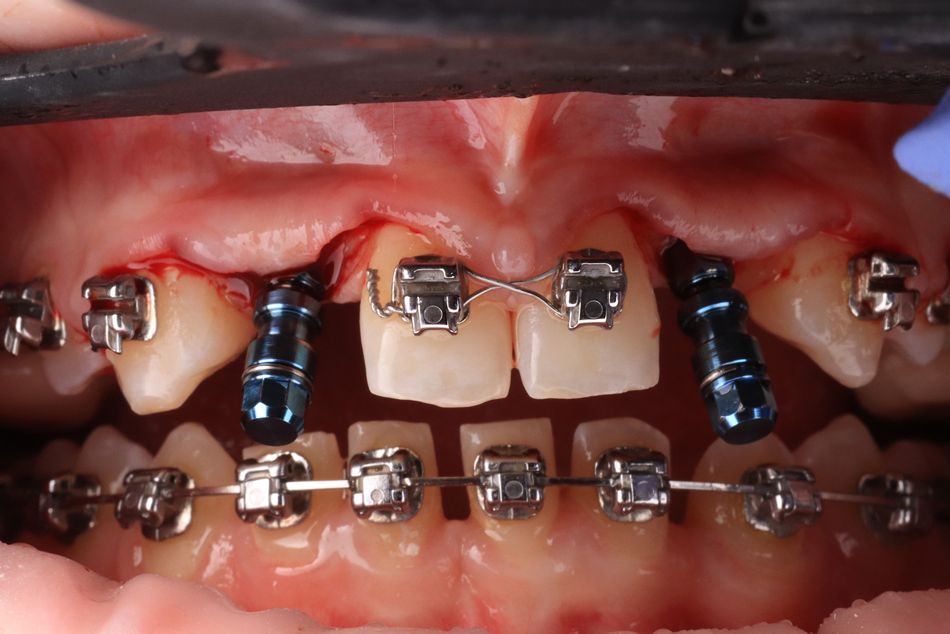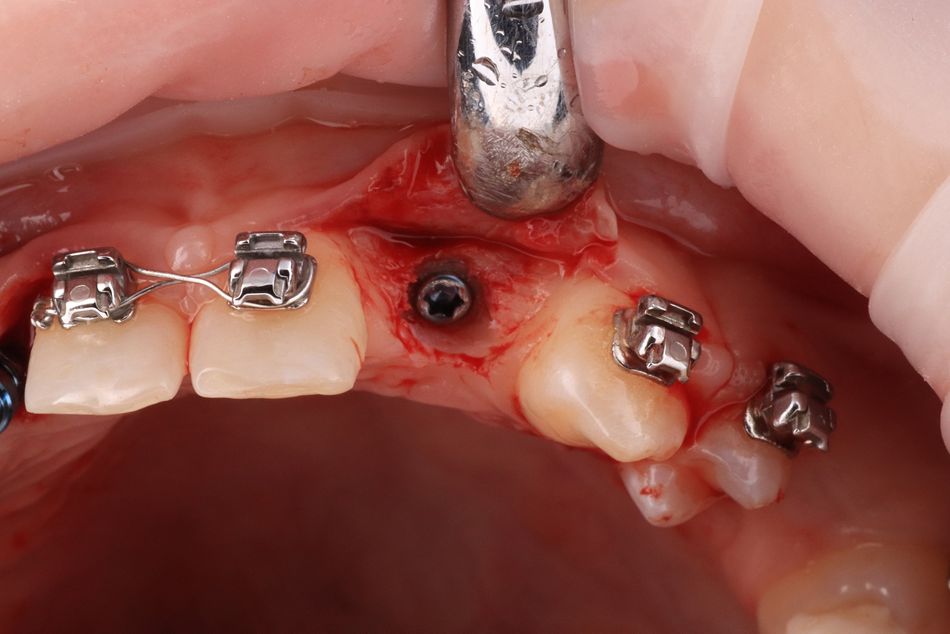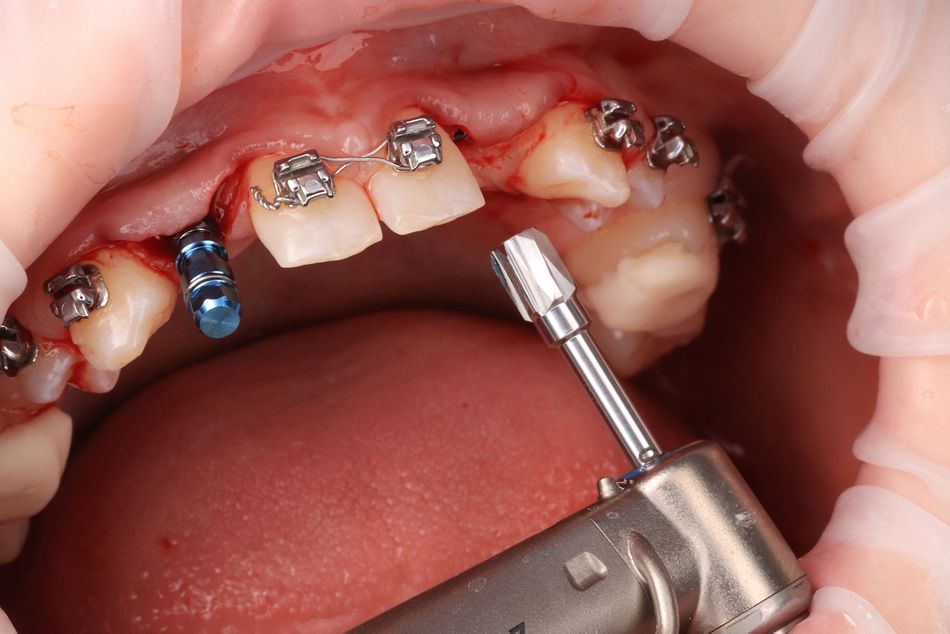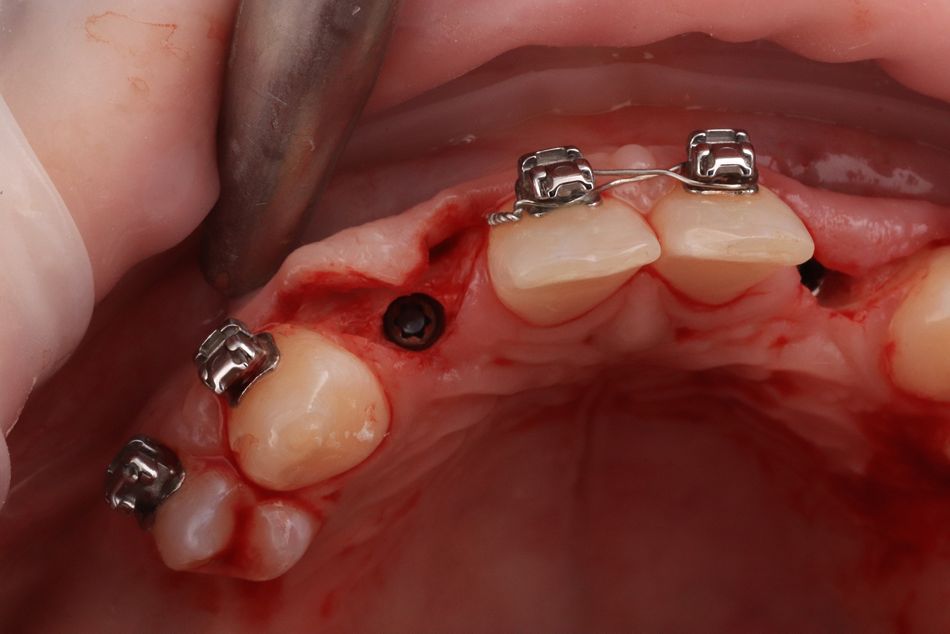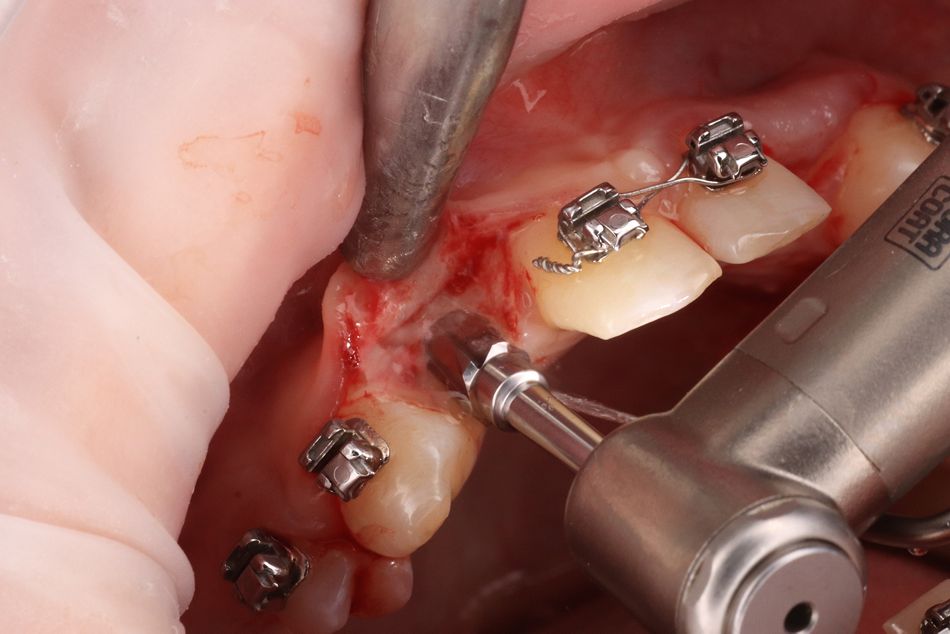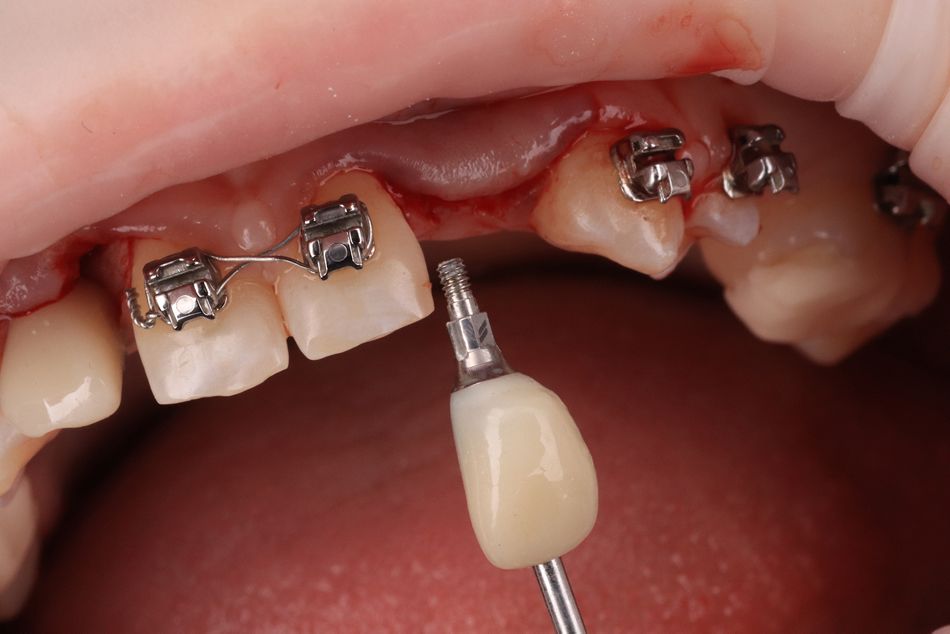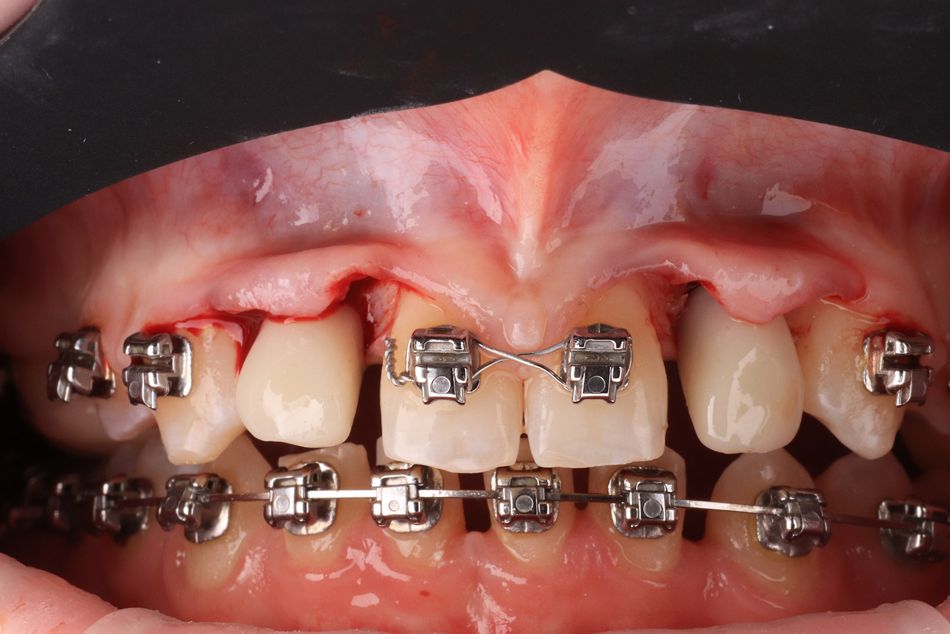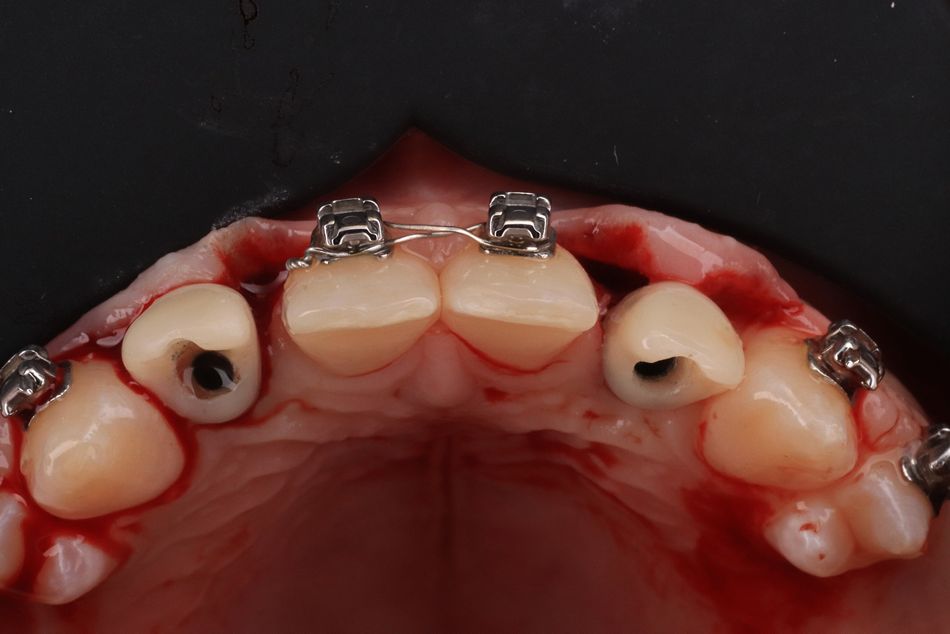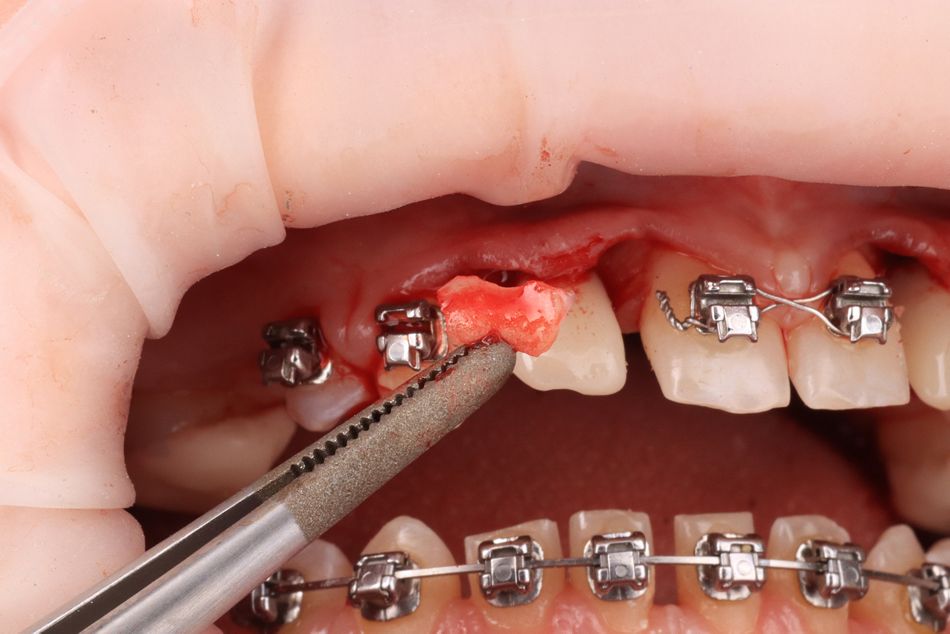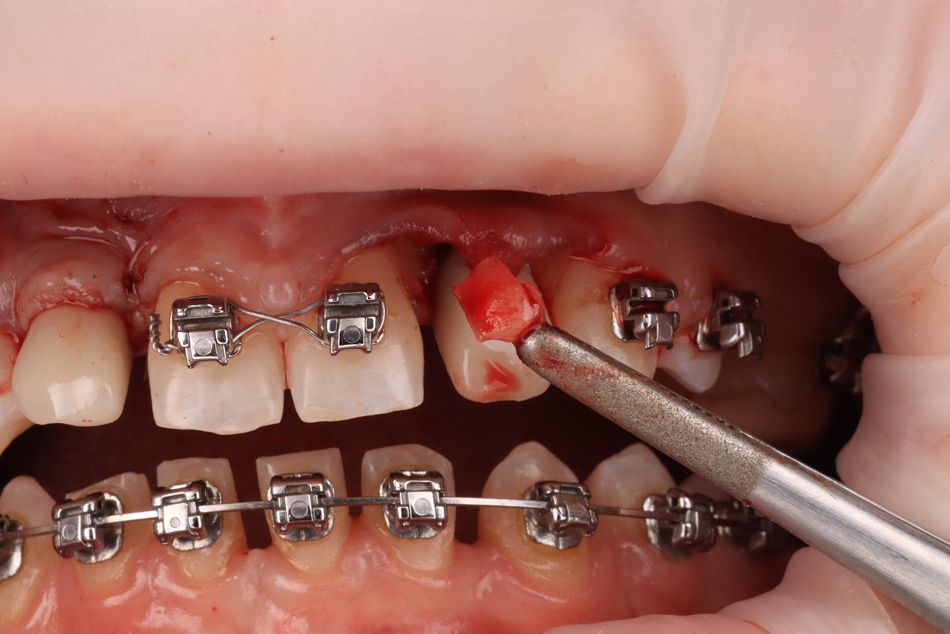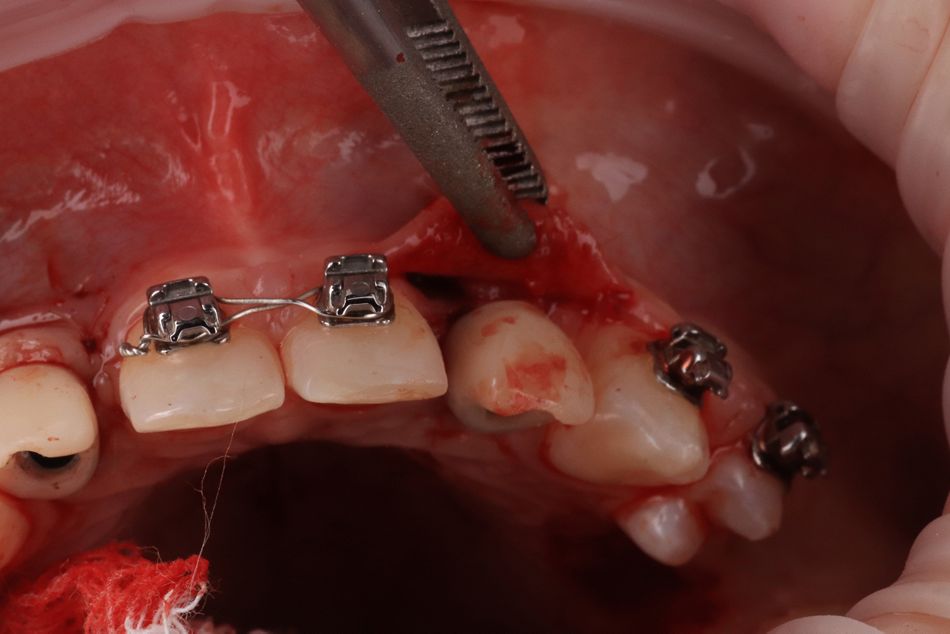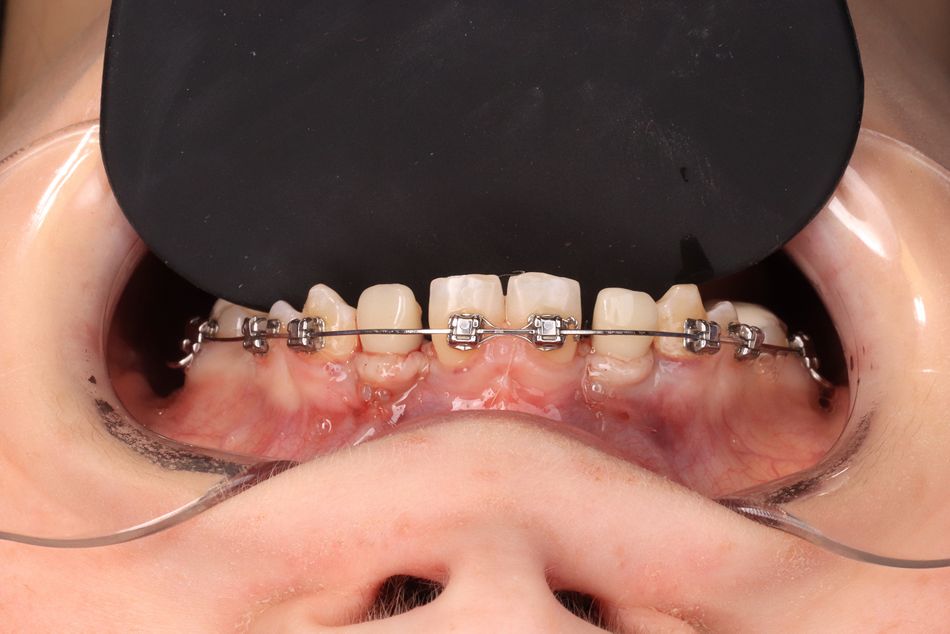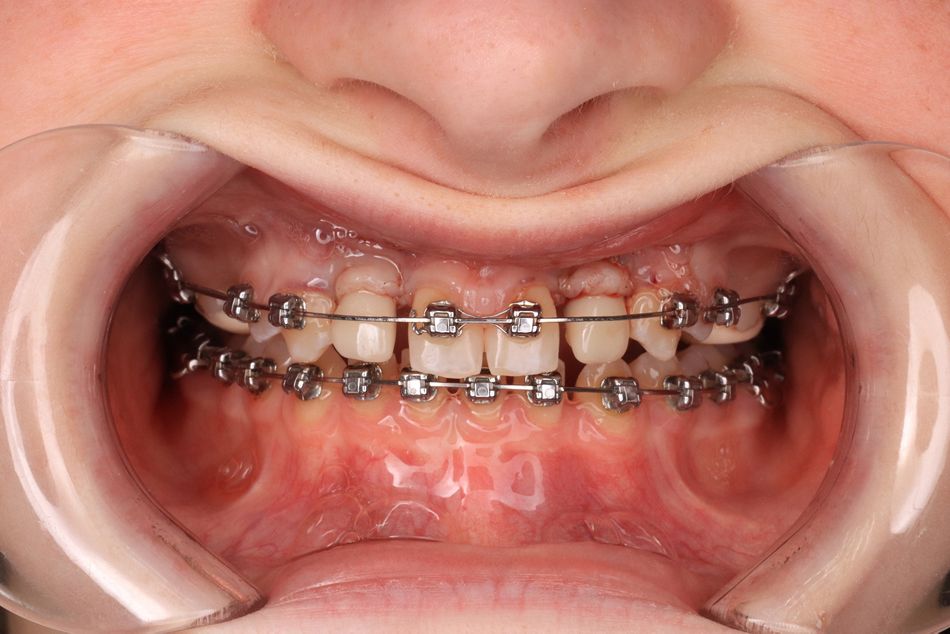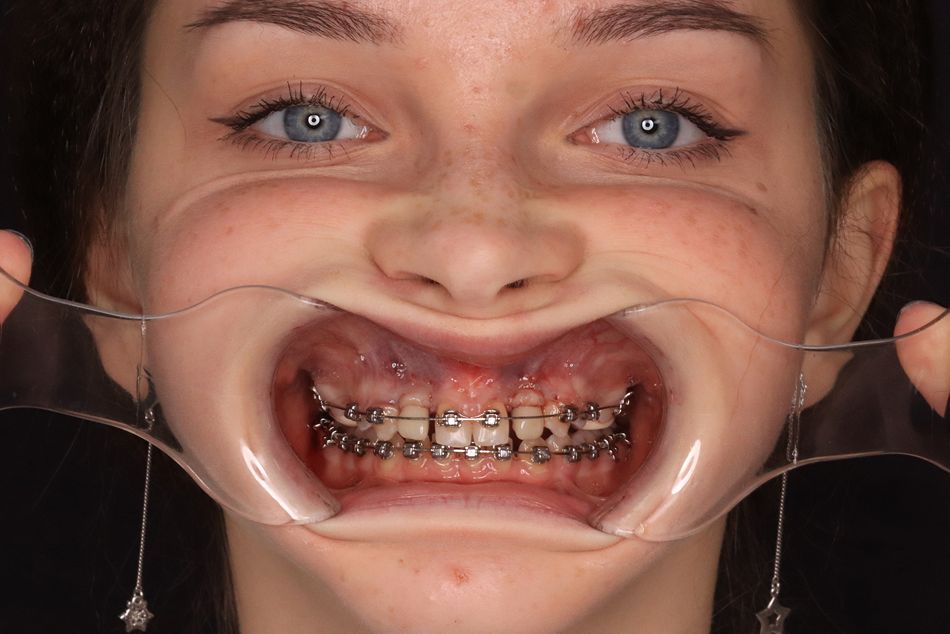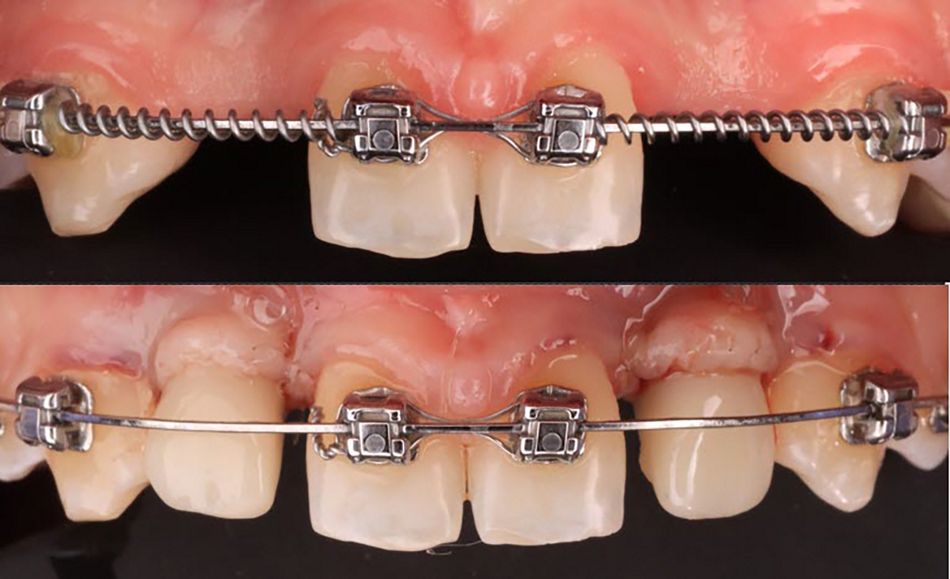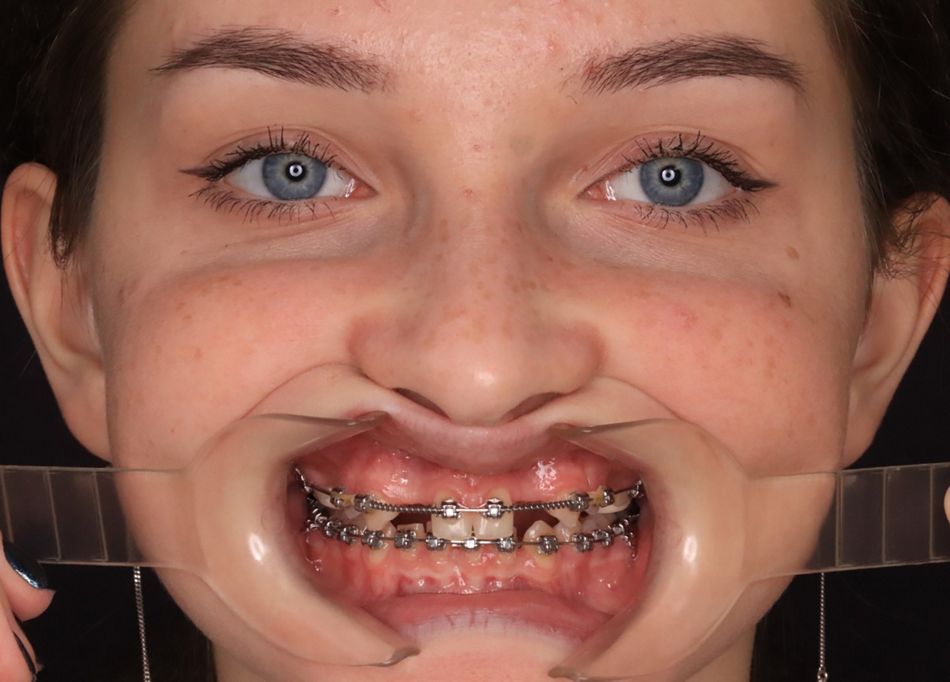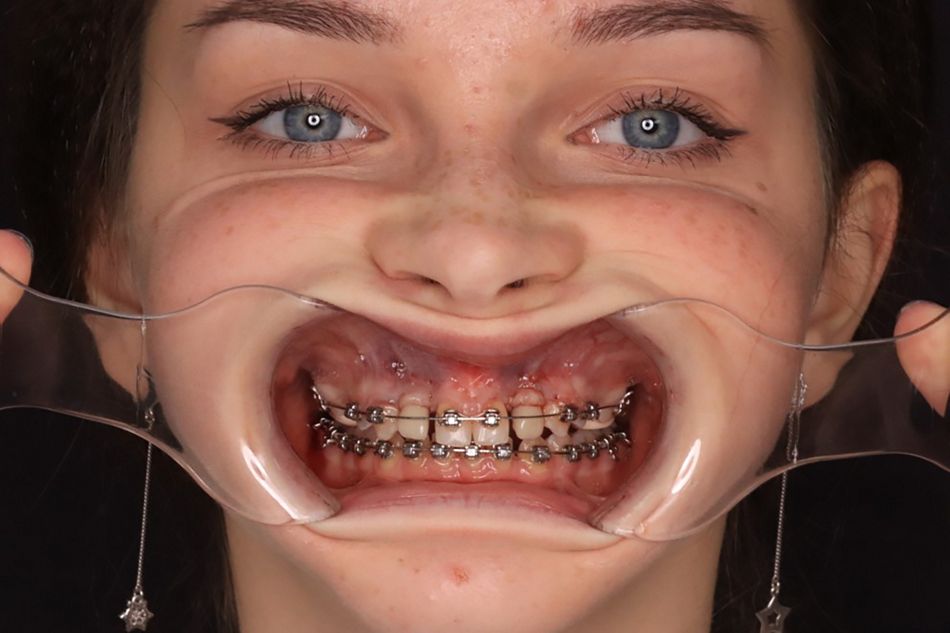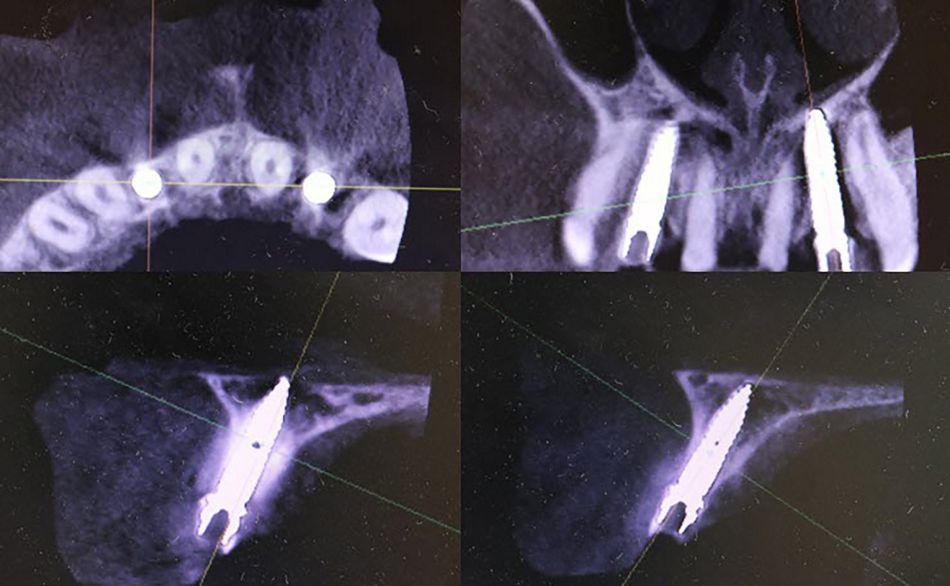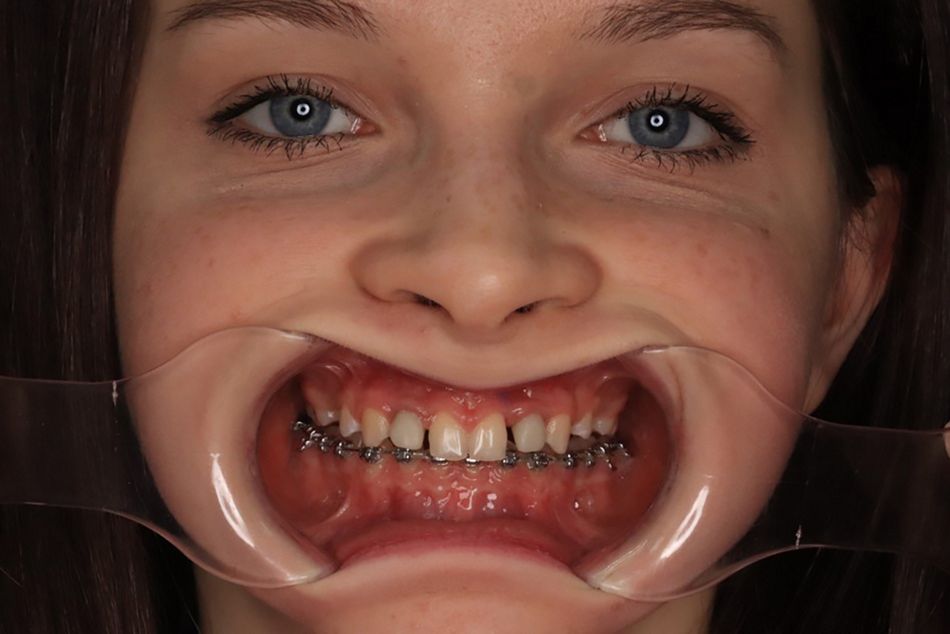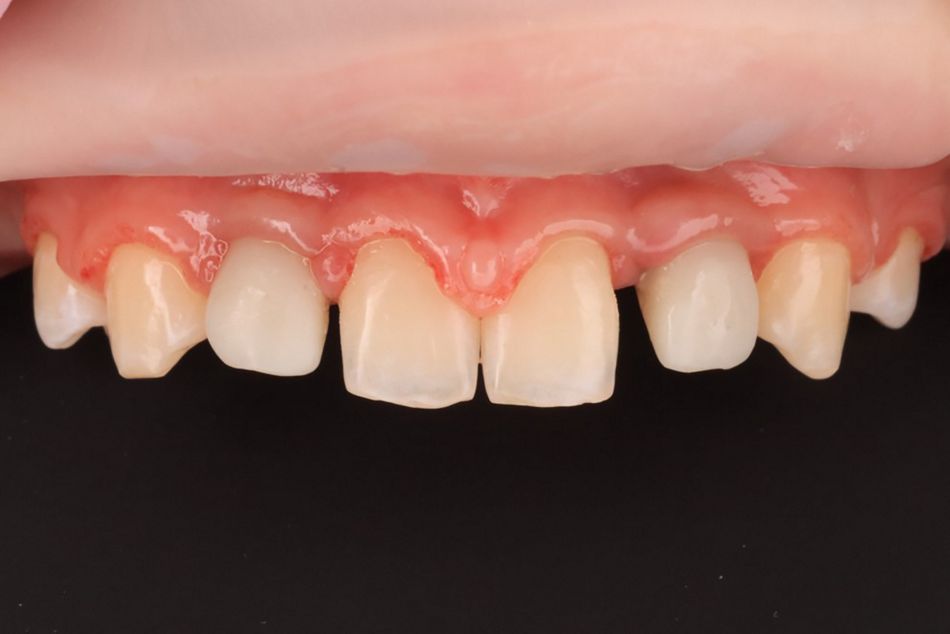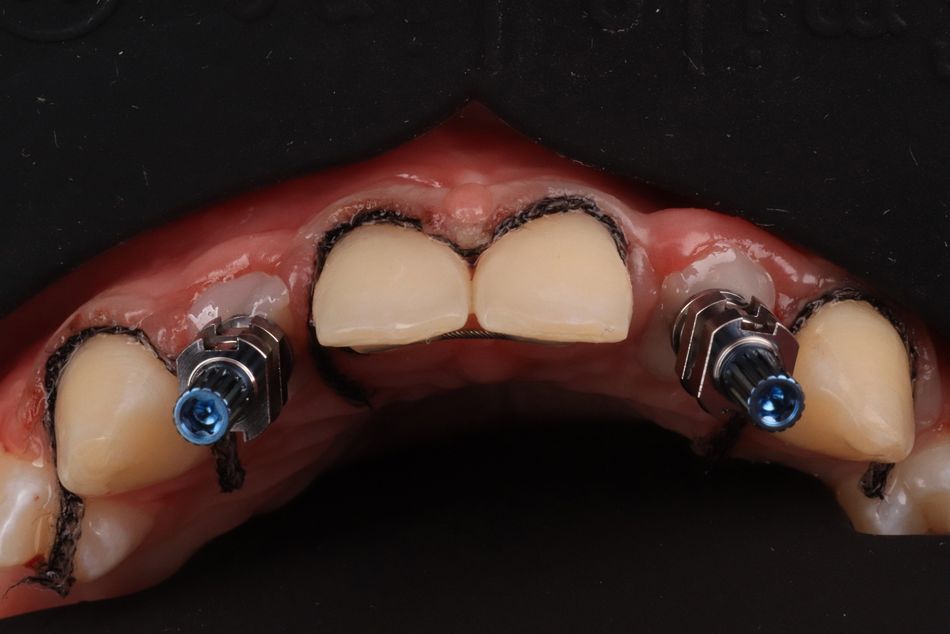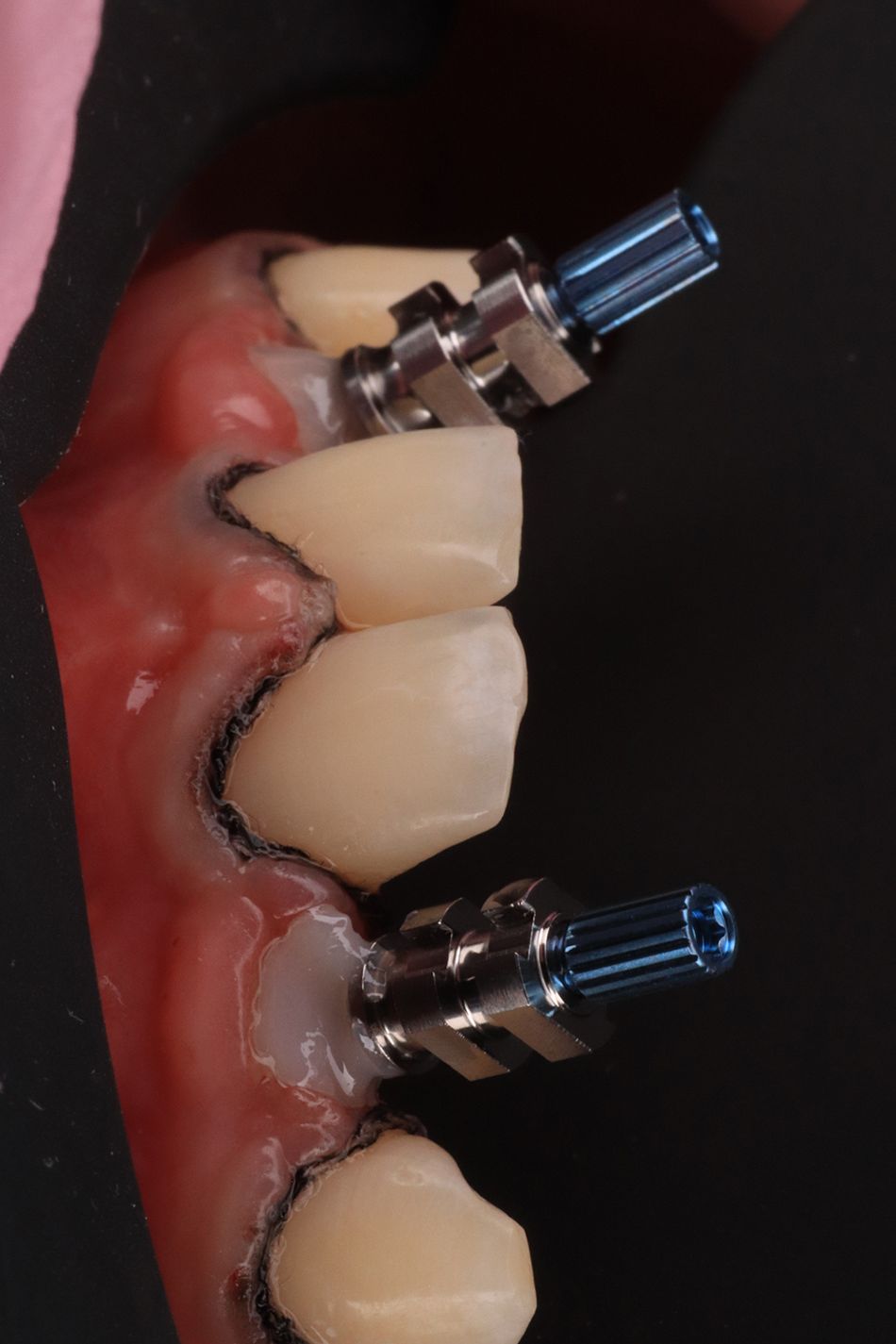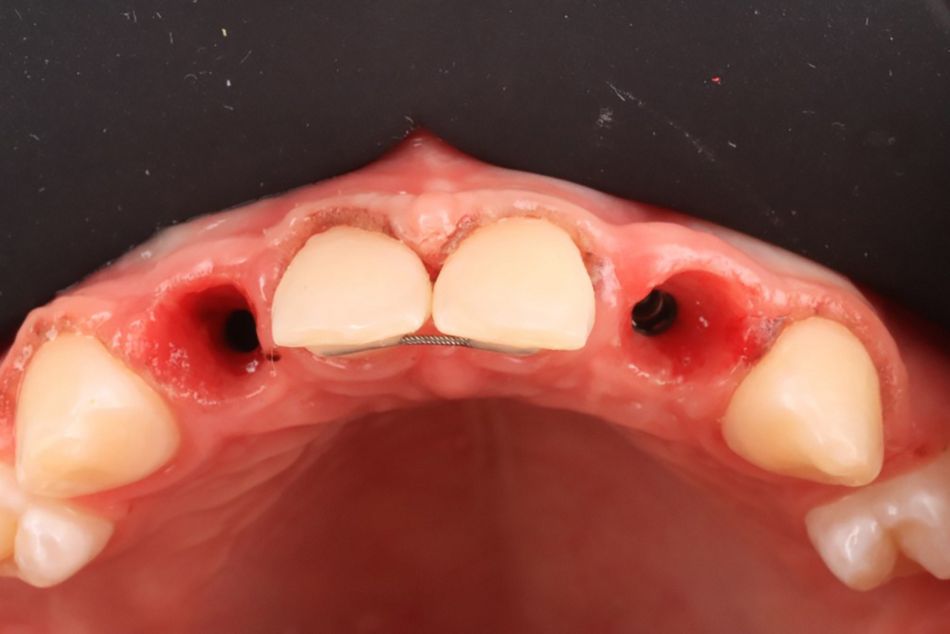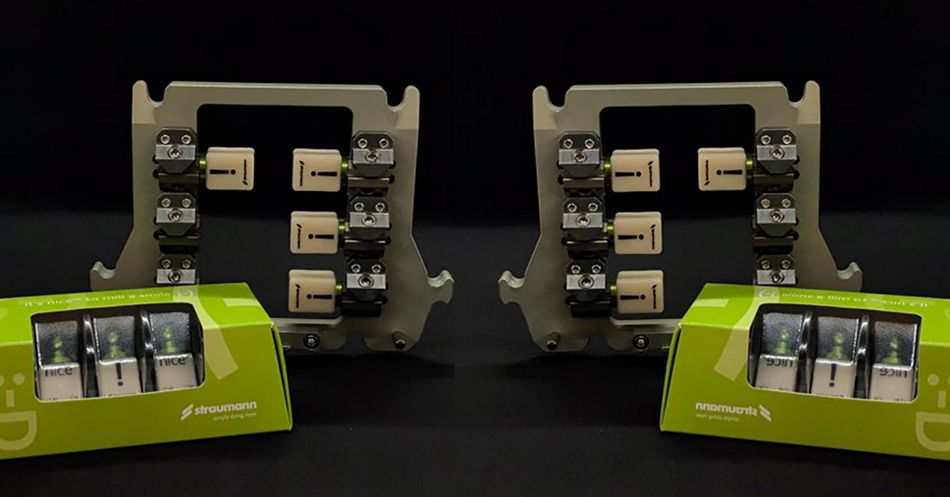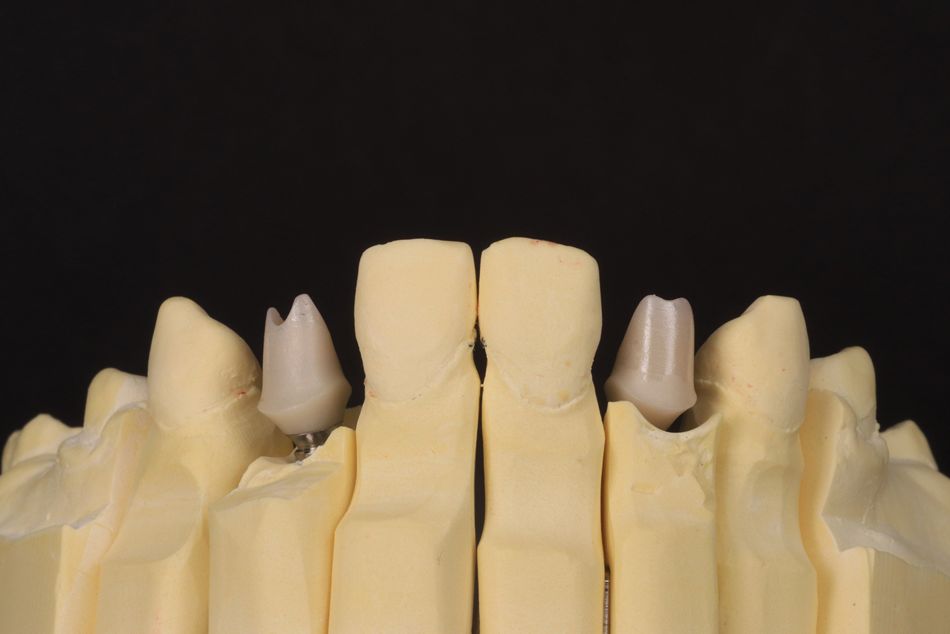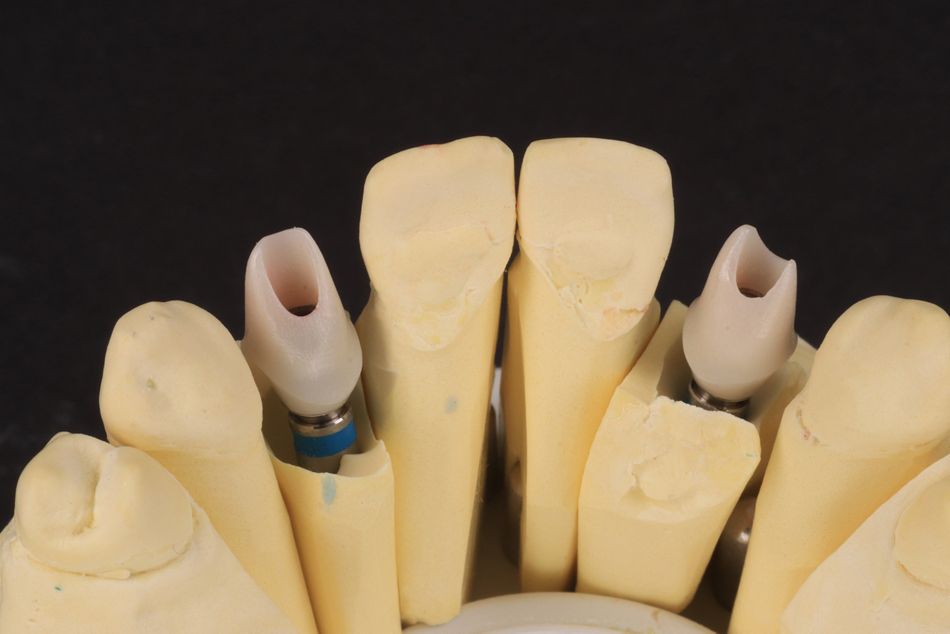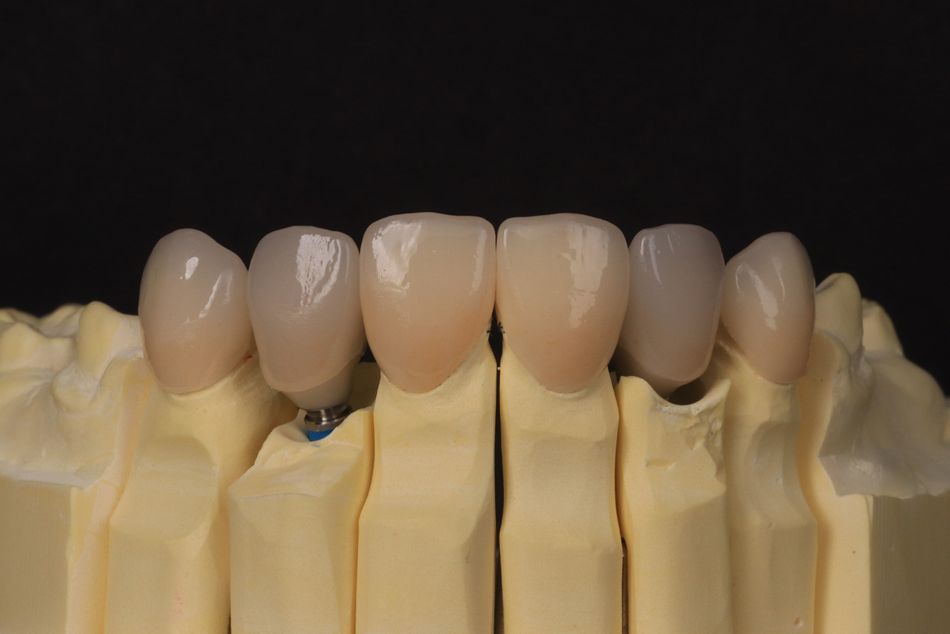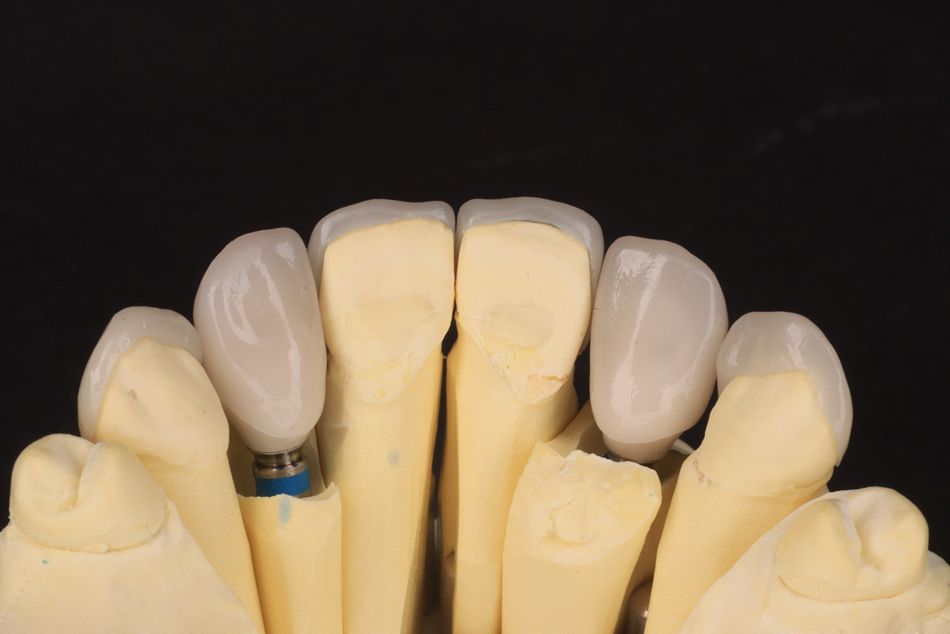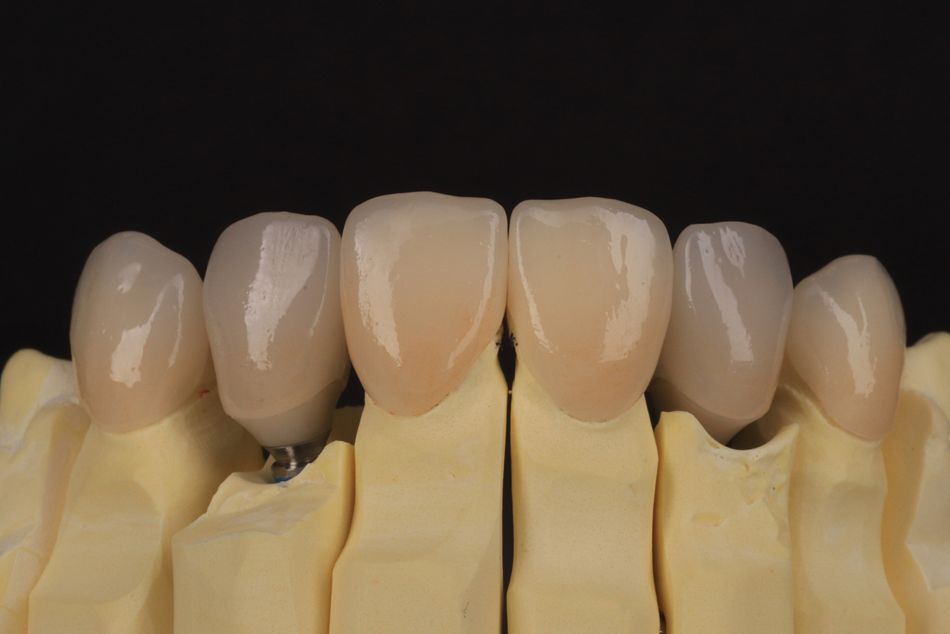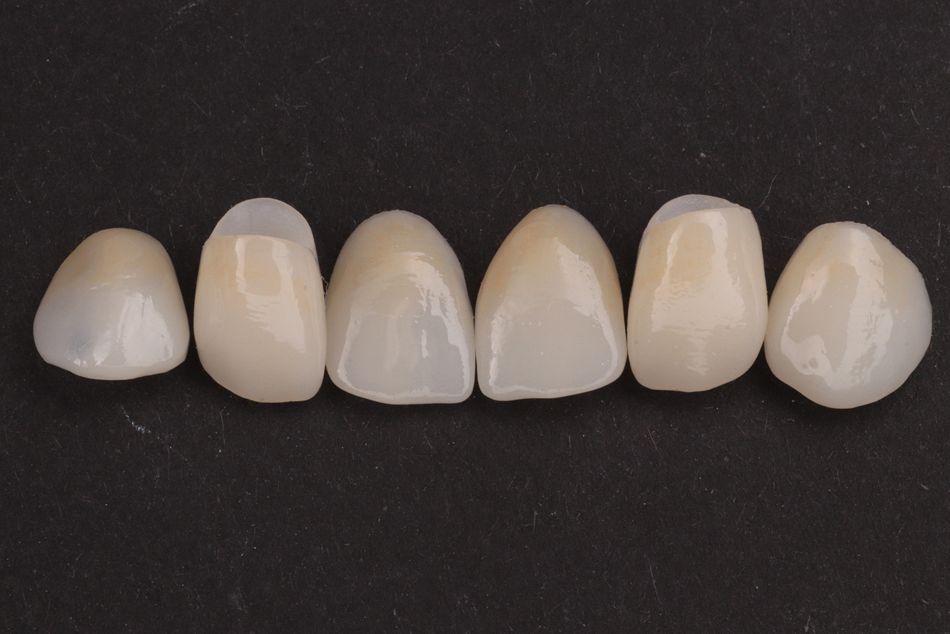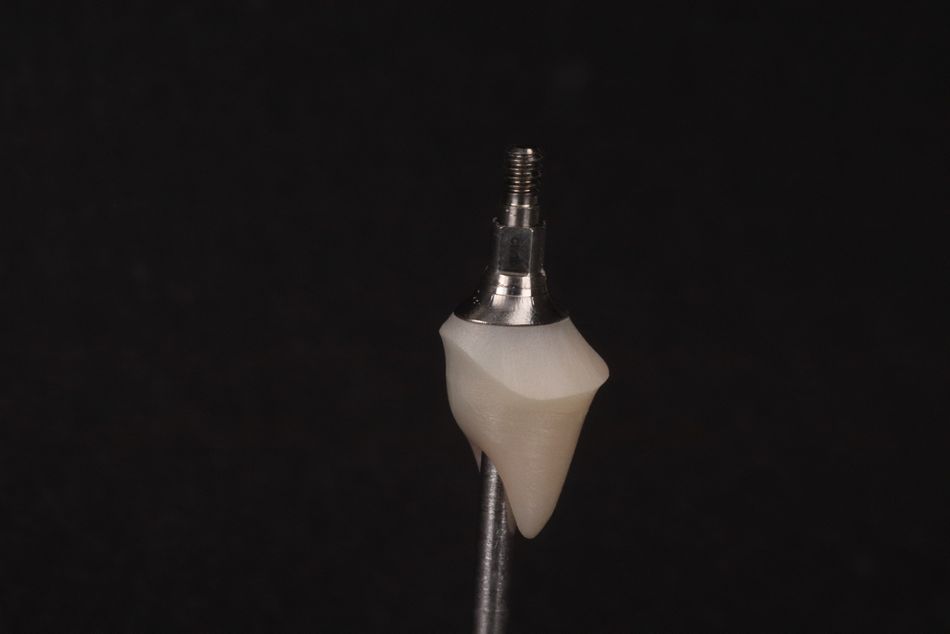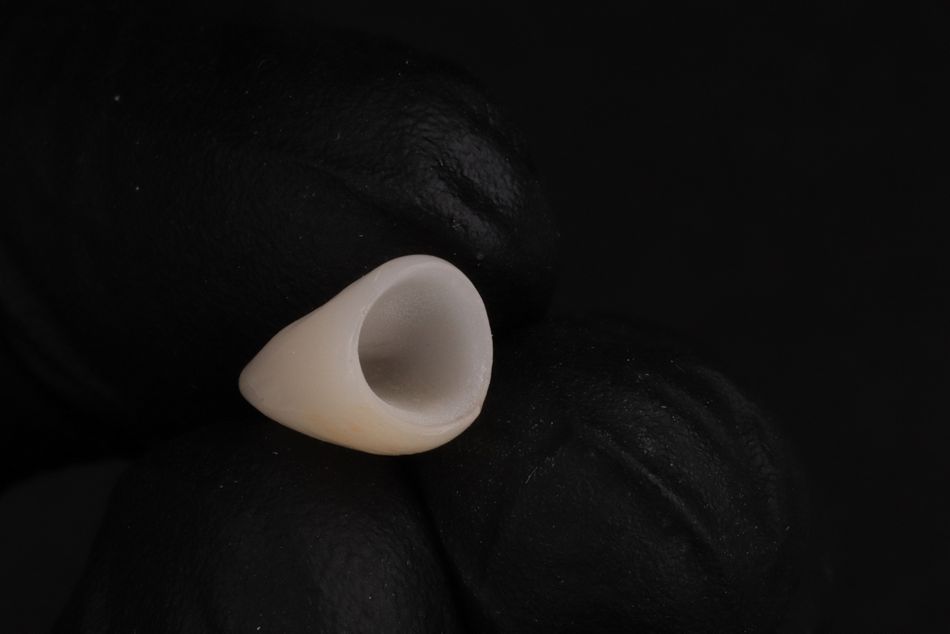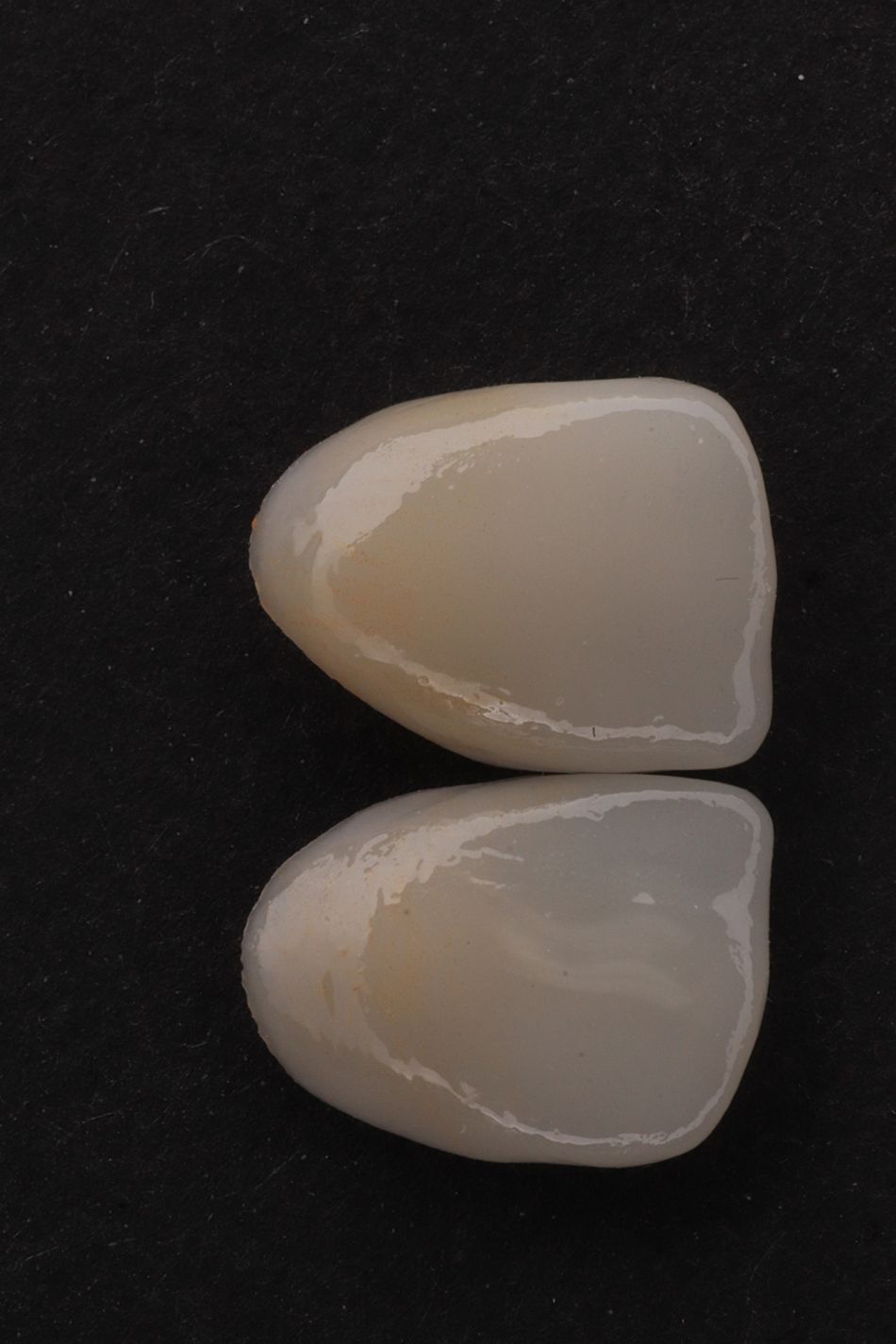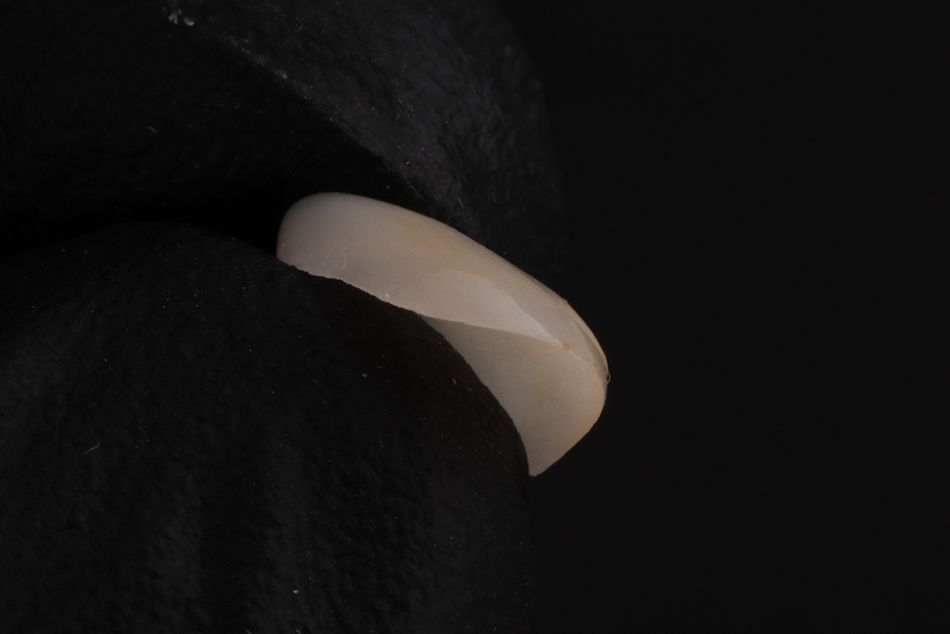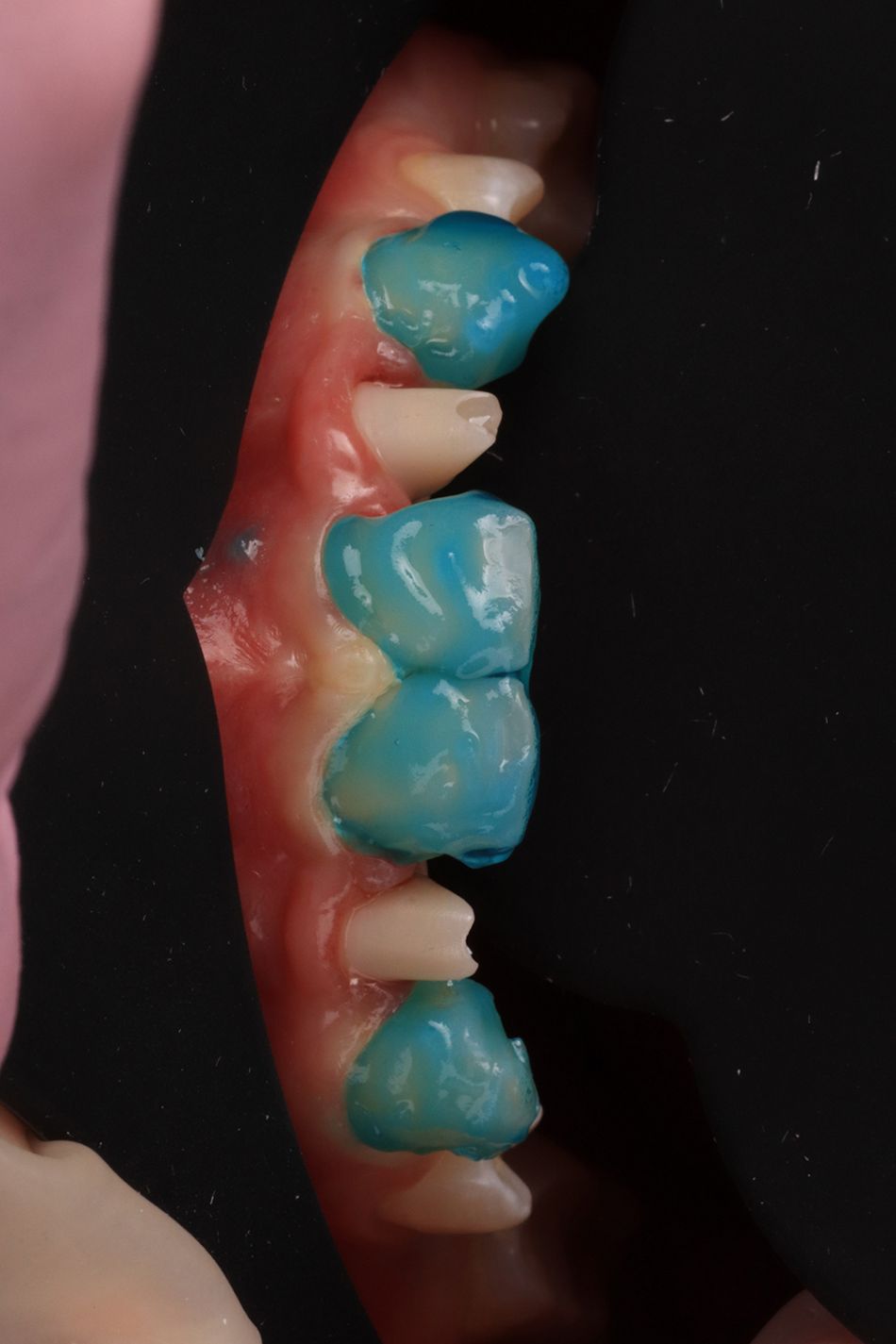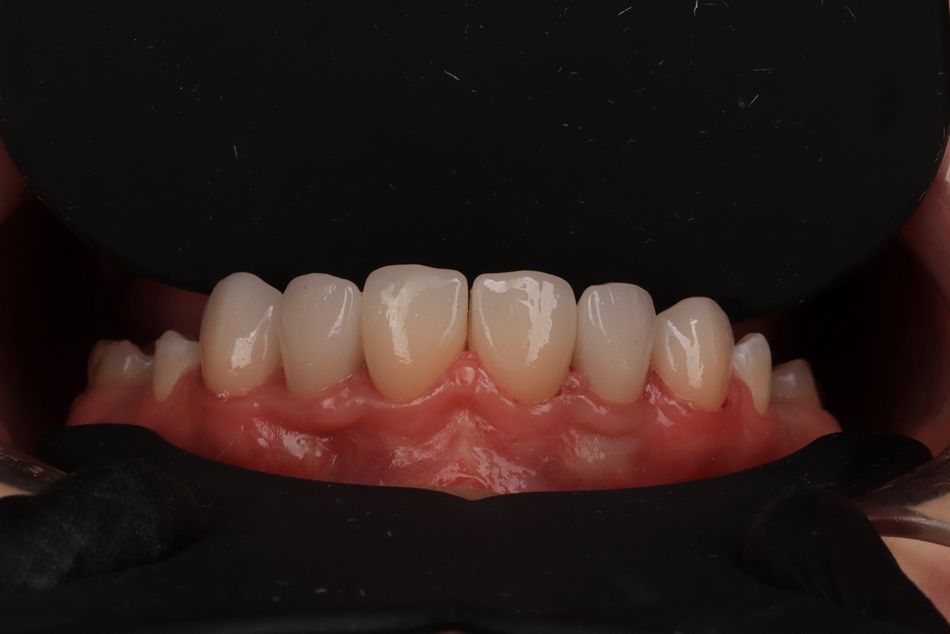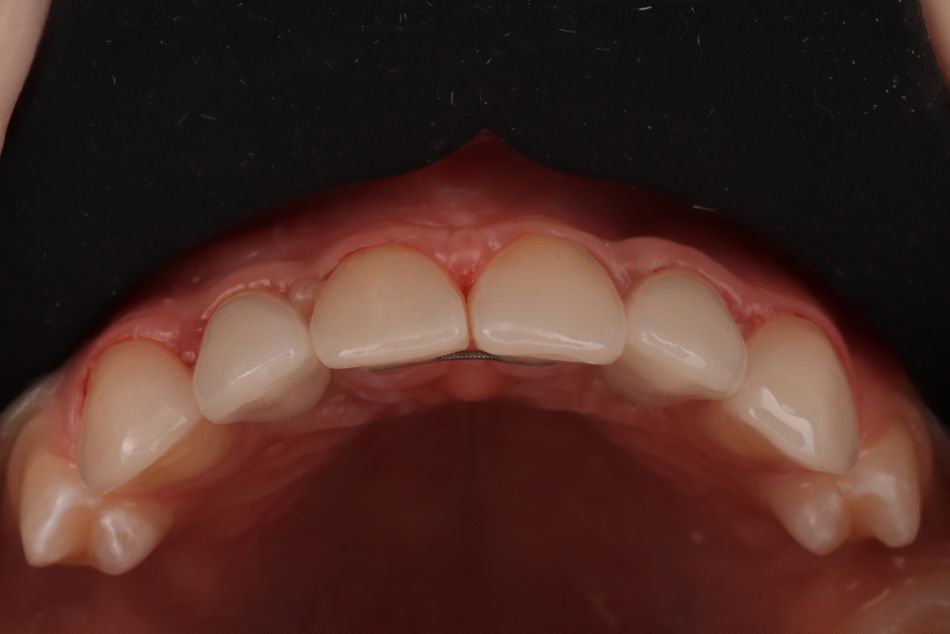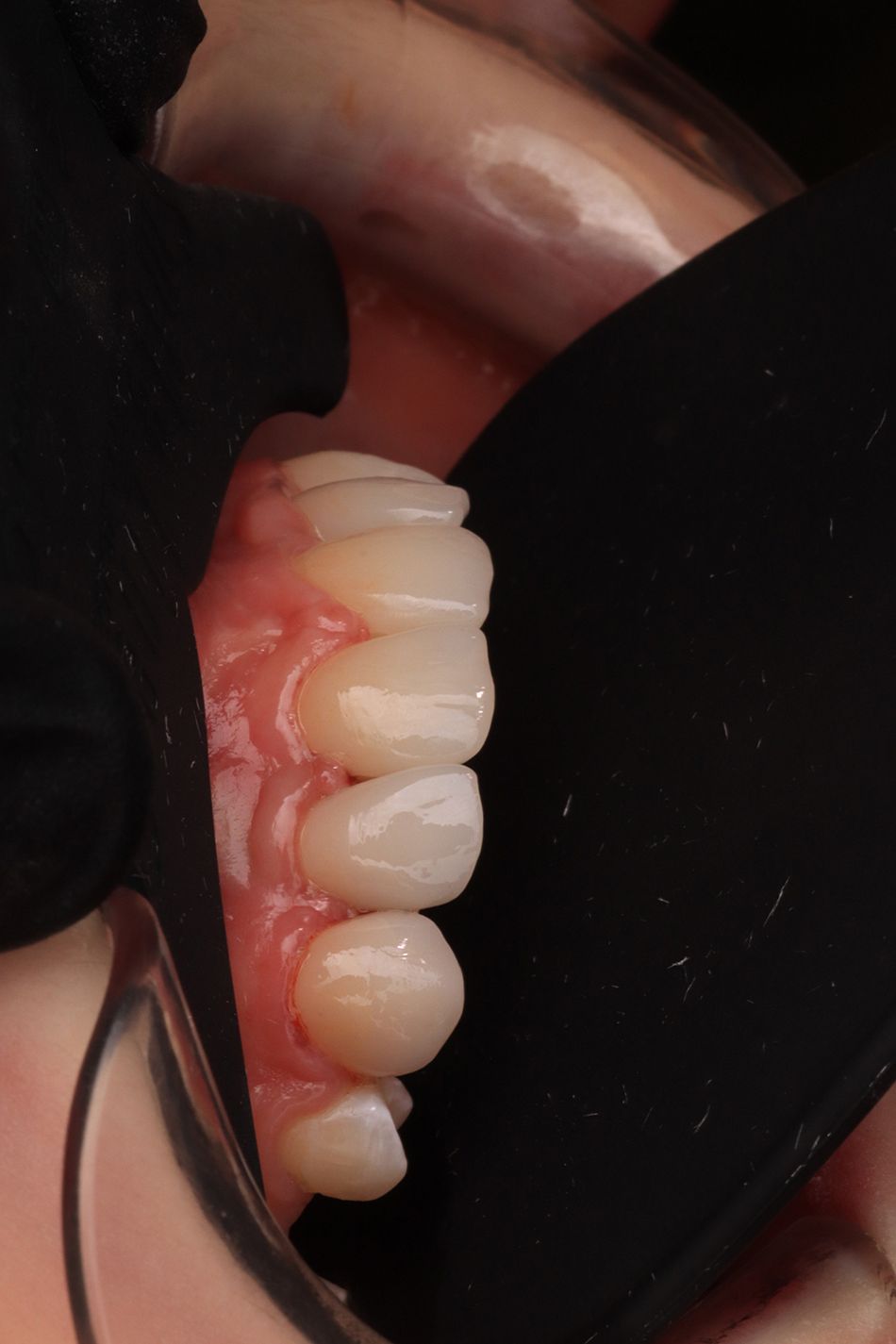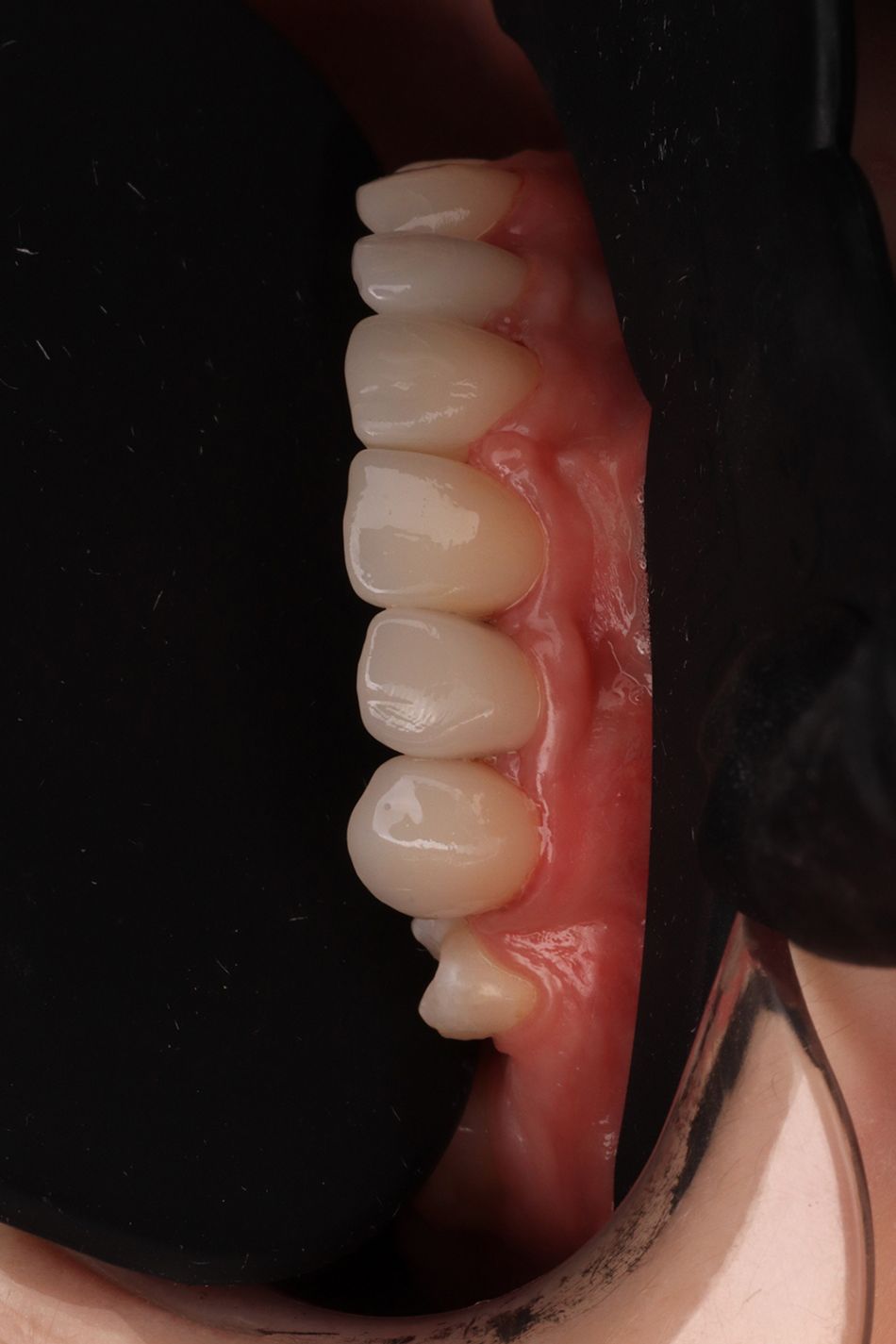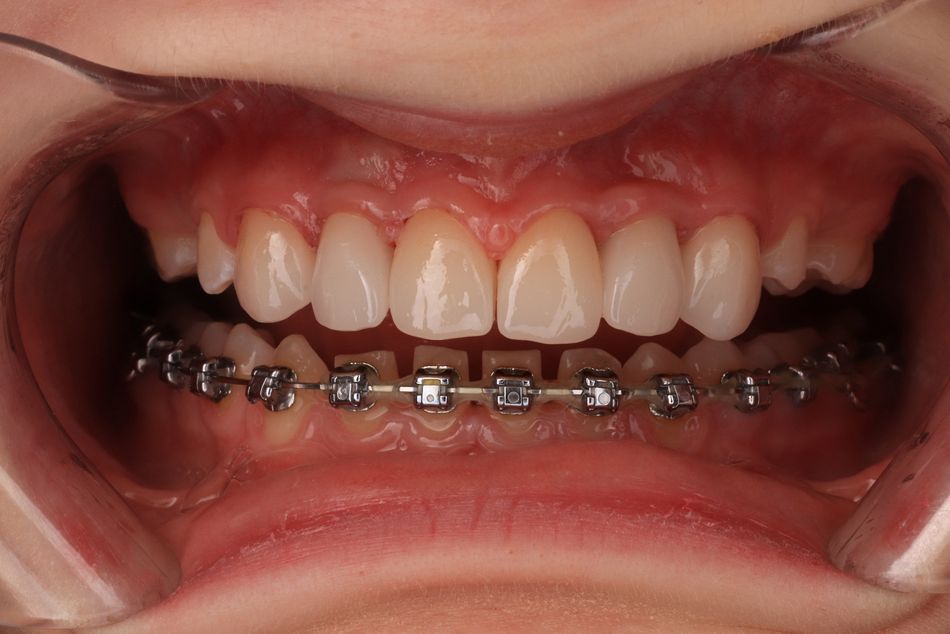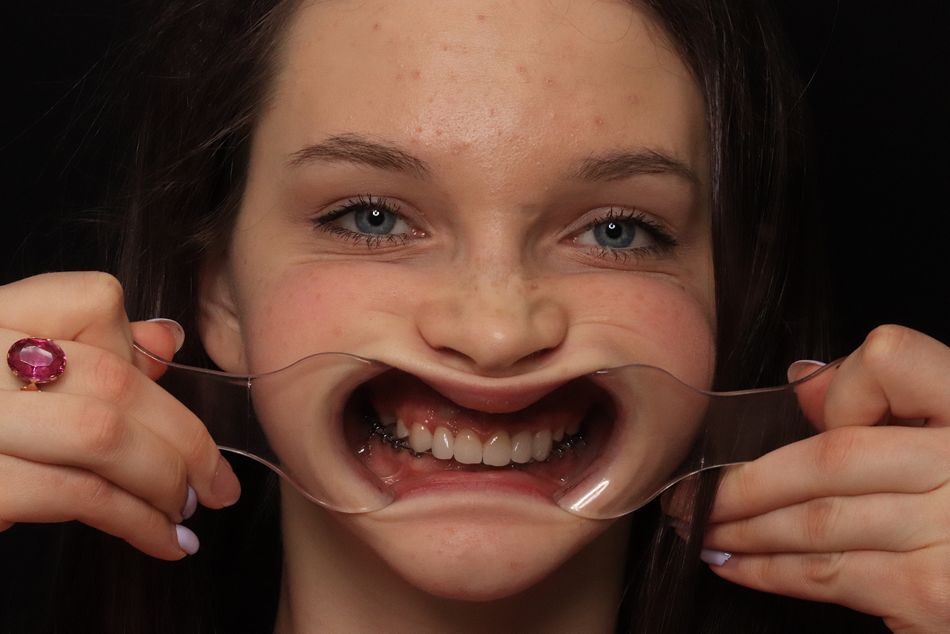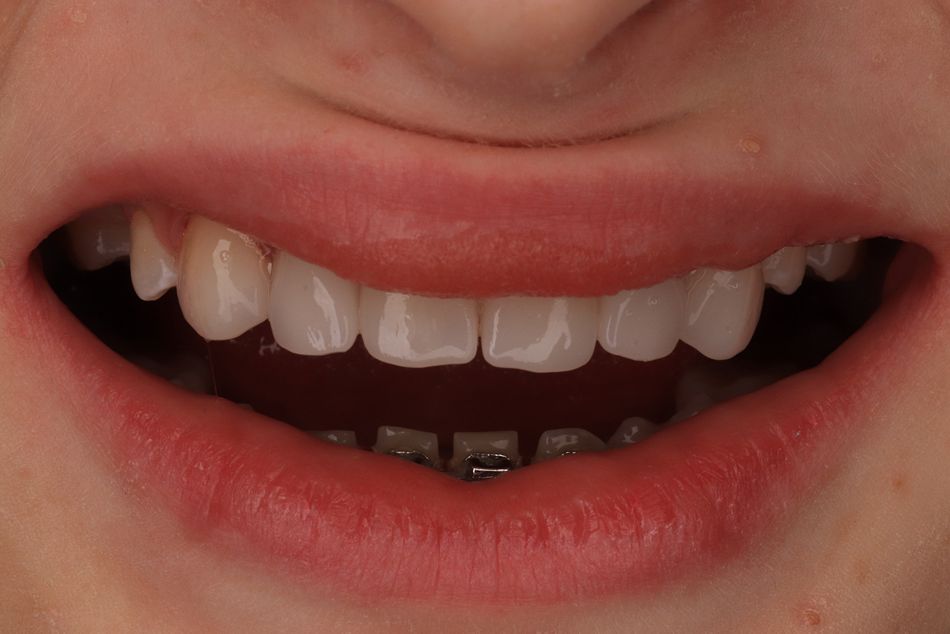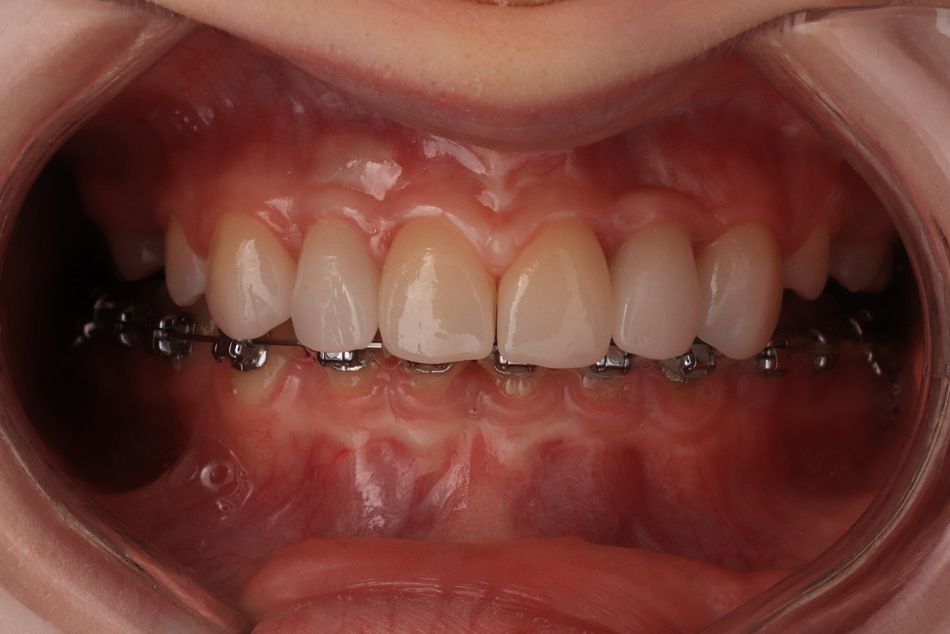This case demonstrates the placement of Straumann Bone Level Tapered (BLT) implants with a diameter of 2.9 mm to address the congenitally missing lateral incisors in maxilla. The patient finished an orthodontic treatment before starting the surgical phase. Whilst patient expectations on white and pink aesthetics were high, both implantation sites had limited bone and soft tissue volume as well as very narrow interdental space. The following clinical case demonstrates that placing Straumann BLT implants with a diameter of 2.9 mm using a full guided surgery approach has ensured a precise implant placement (while avoiding bone augmentation surgery) and helped to optimise the aesthetic outcomes. It is also important to stress that the dental lab specializing on high-end aesthetics was located 300km from the clinic, so it was decided to utilize the digital workflows to the maximum.
Initial situation
A 19-year-old female patient with good hygiene, no medical history, no bad habits, healthy, came to the clinic with a complaint on (congenitally) missing teeth 12 and 22 and improvement of smile aesthetics. The patient had high expectations on the aesthetic outcome and also wanted to limit the surgical interventions in order to minimize any possible surgical trauma and invasiveness. The patient was undergoing an ortho-treatment for malocclusion: neutral occlusion, primary adentia 1.2,1.5,2.2,2.5, persistence 5.5,6.5 and narrowing of the dentition. (Fig 1-4)
Diagnostics and Treatment planning
The CBCT data showed a deficit in the bone volume in the area of the missing 12 and 22 teeth and a very narrow space between the adjacent teeth. The patient desired highly aesthetic outcomes while unwilling to consider any bone grafting procedures. It was decided to utilise the smallest possible diameter implants and use a guided surgery approach with digital planning and fully guided implant placement. This method of surgery allows precise positioning of small-diameter implants - Straumann Bone Level Tapered (BLT) 2.9 mm in situations where the bone volume is critically low. It was also decided to use flap approach to double check the physical bone volume and manipulate with the soft tissues to optimise the soft-tissue outcomes. The template was modeled using coDiagnostiX software and 3D printed. Provisional restorations were also pre-printed and glued to Variobase. (Fig. 5-13)


